- Strong performance and all-wheel drive
- Solid ride and handling balance
- Excellent interior quality and feel
- Far, far too expensive to buy
- Very slow charging speed
- Grainy screen quality
As the world turns towards electrification in its automobile fleet, automakers must step up their game and make electric (or part-electric) cars in a bid to reduce tailpipe emissions. It’s been a thing for years in Europe now, but here in the automotive third world that is Australia, we’re only just starting to come on song for electrified car sales. The latest in a bid to reduce emissions is Peugeot and its new 3008 plug-in hybrid, which launched with an eye-popping price. Is it worth the asking money? We tested the 2022 Peugeot 3008 Plug-In Hybrid to find out.
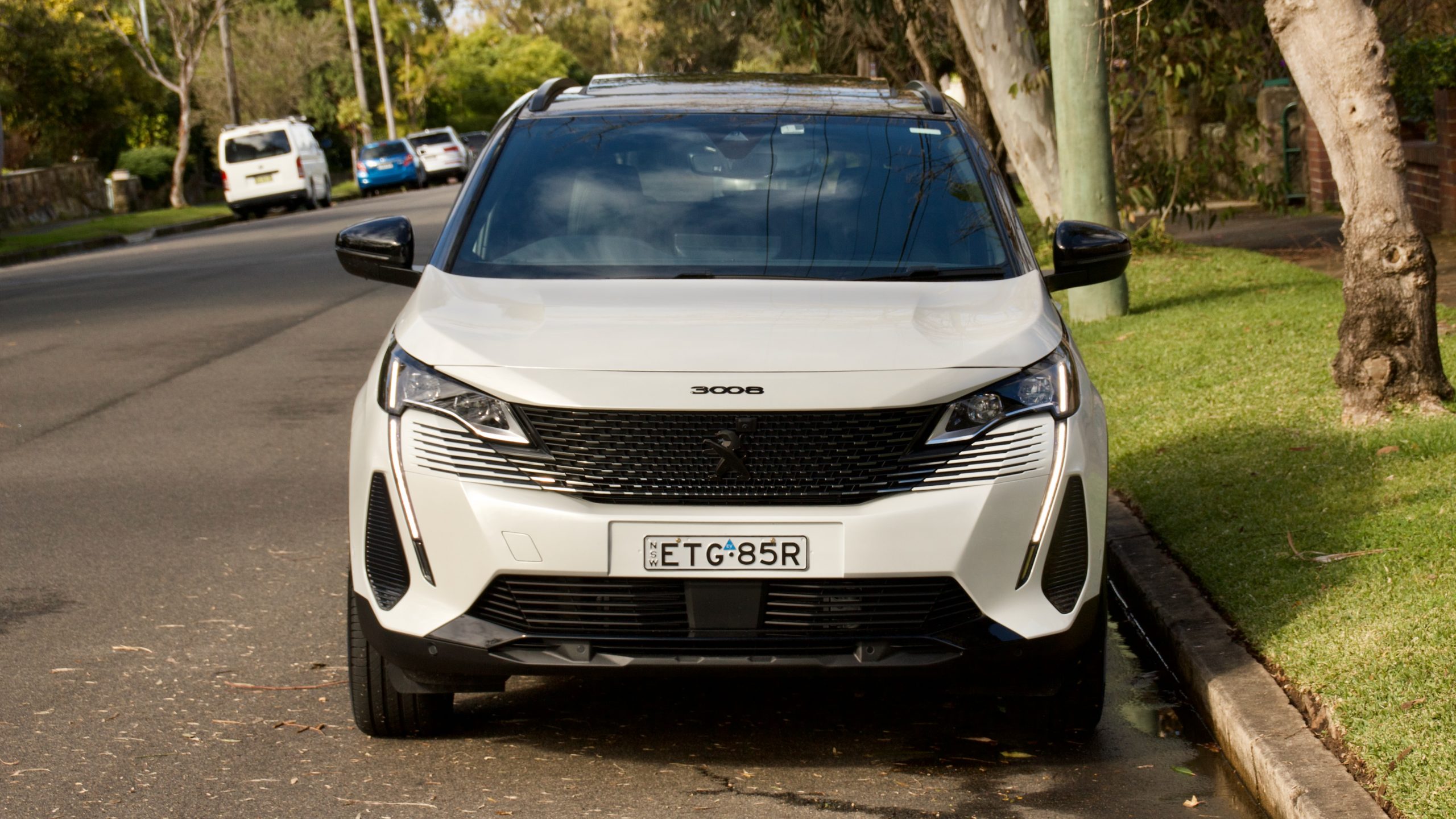
The 3008 PHEV sits atop the local 3008 range, and is fitted with the same equipment that you’d get on the next-level-down GT Sport. It offers up to 60km of all-electric range, can be charged from the wall in as little as 5.5 hours and promises the same all-round capability of the regular 3008, but with more performance. Is it that easy to summarise?
Price & Equipment: 5/10
Priced from $84,790 plus on-road costs (around $93,000 drive away), the 3008 Plug-In Hybrid largely shares its equipment list on the petrol-powered 3008 GT Sport on which it’s based.
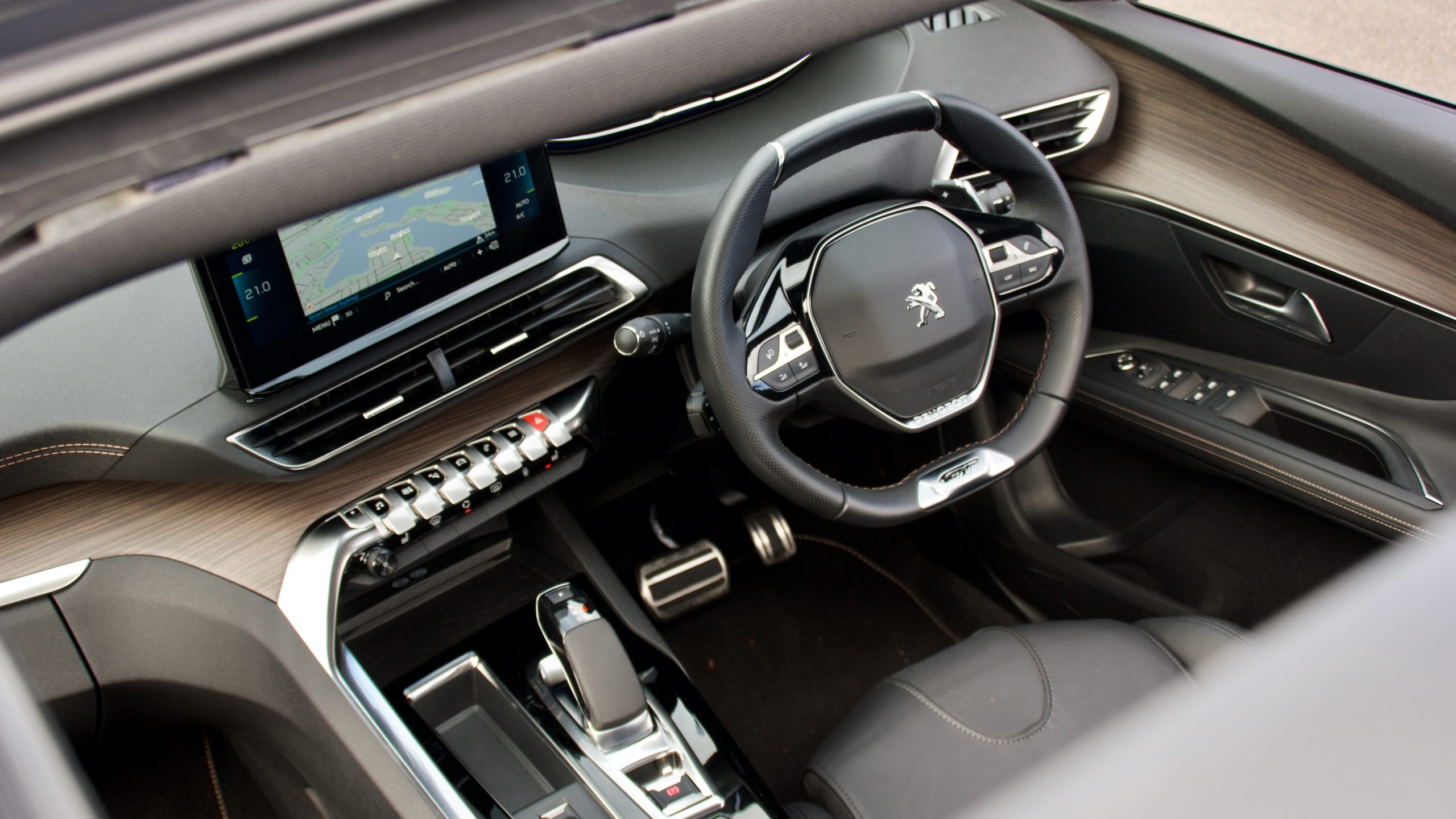
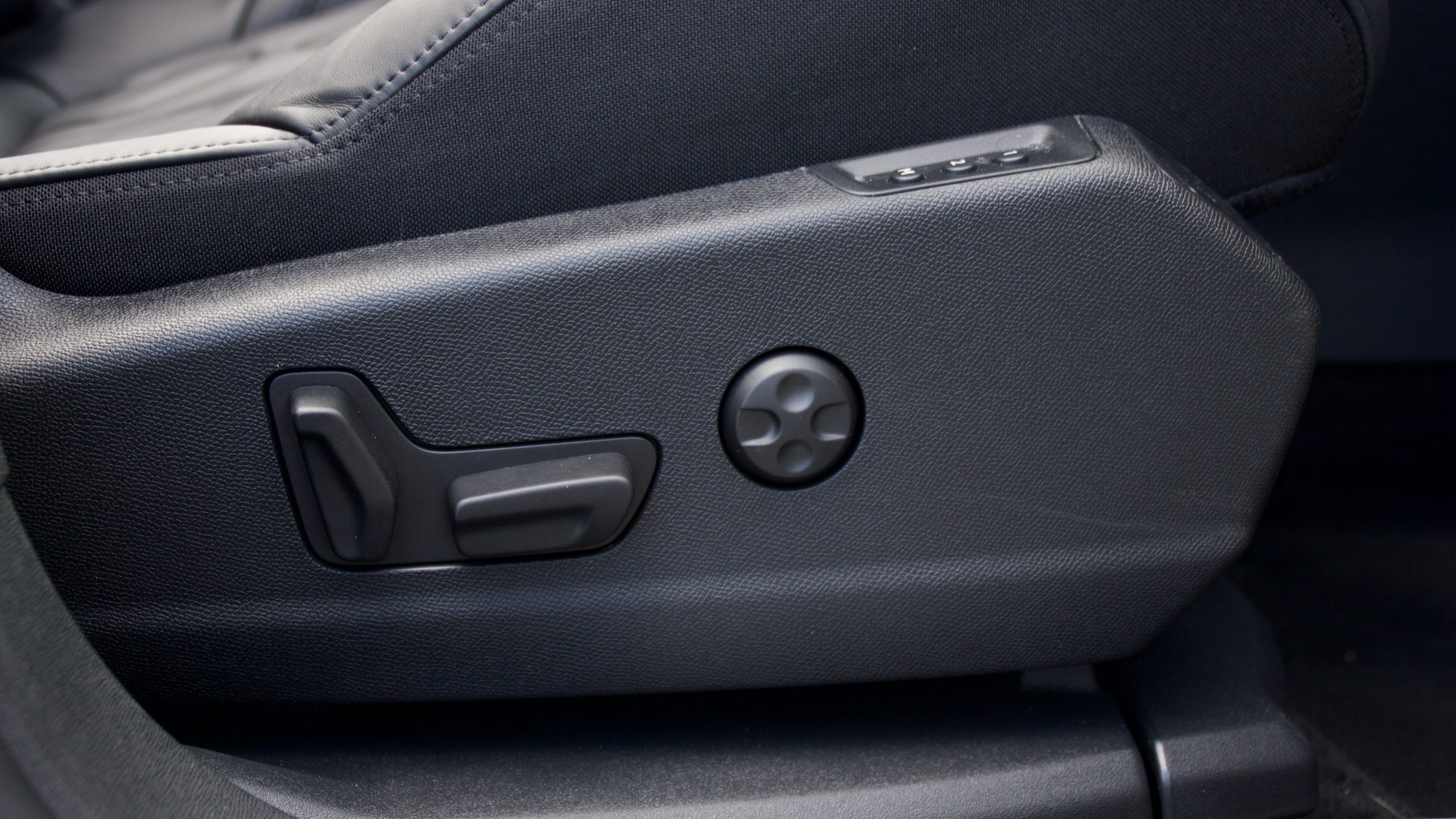
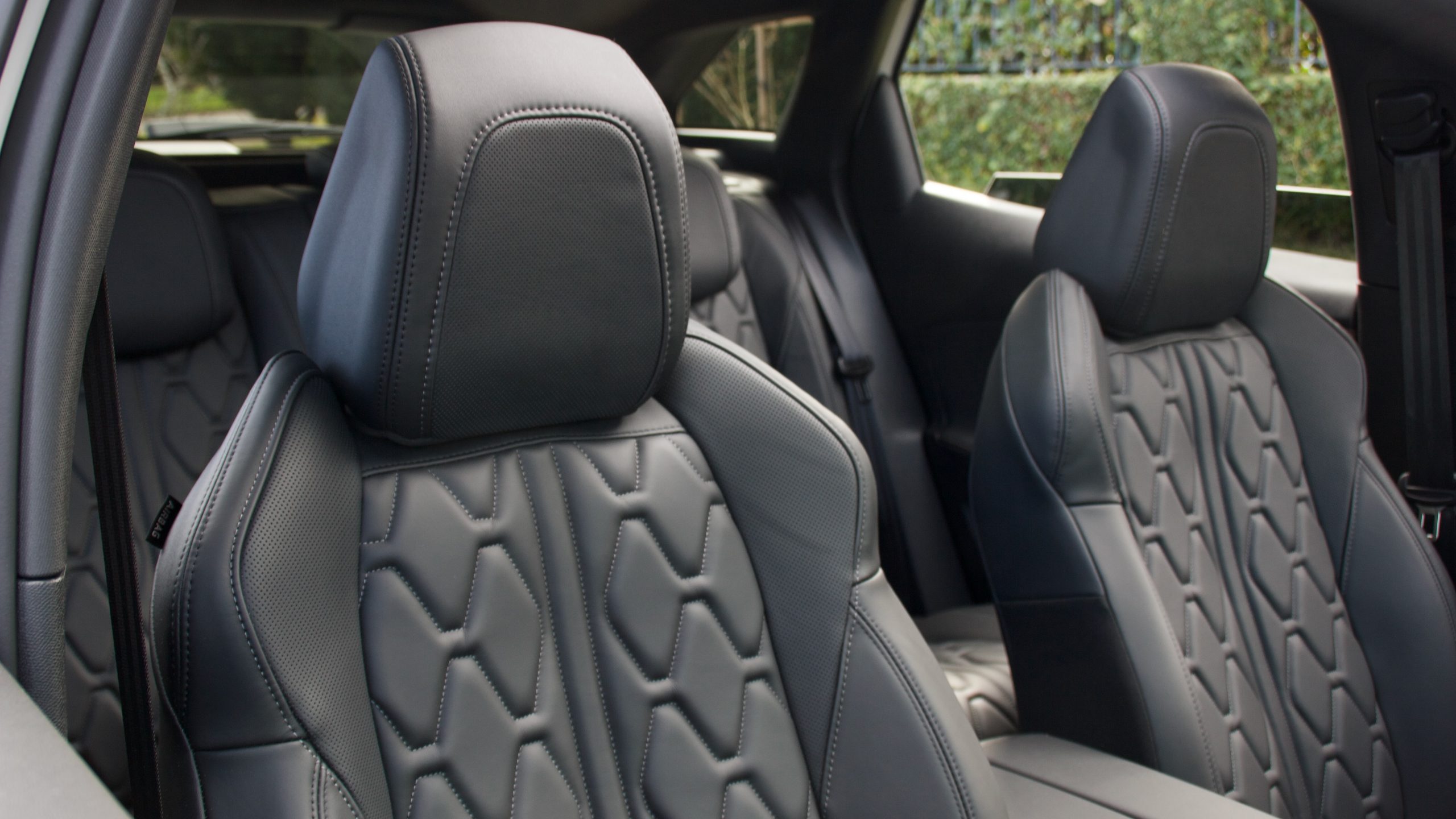
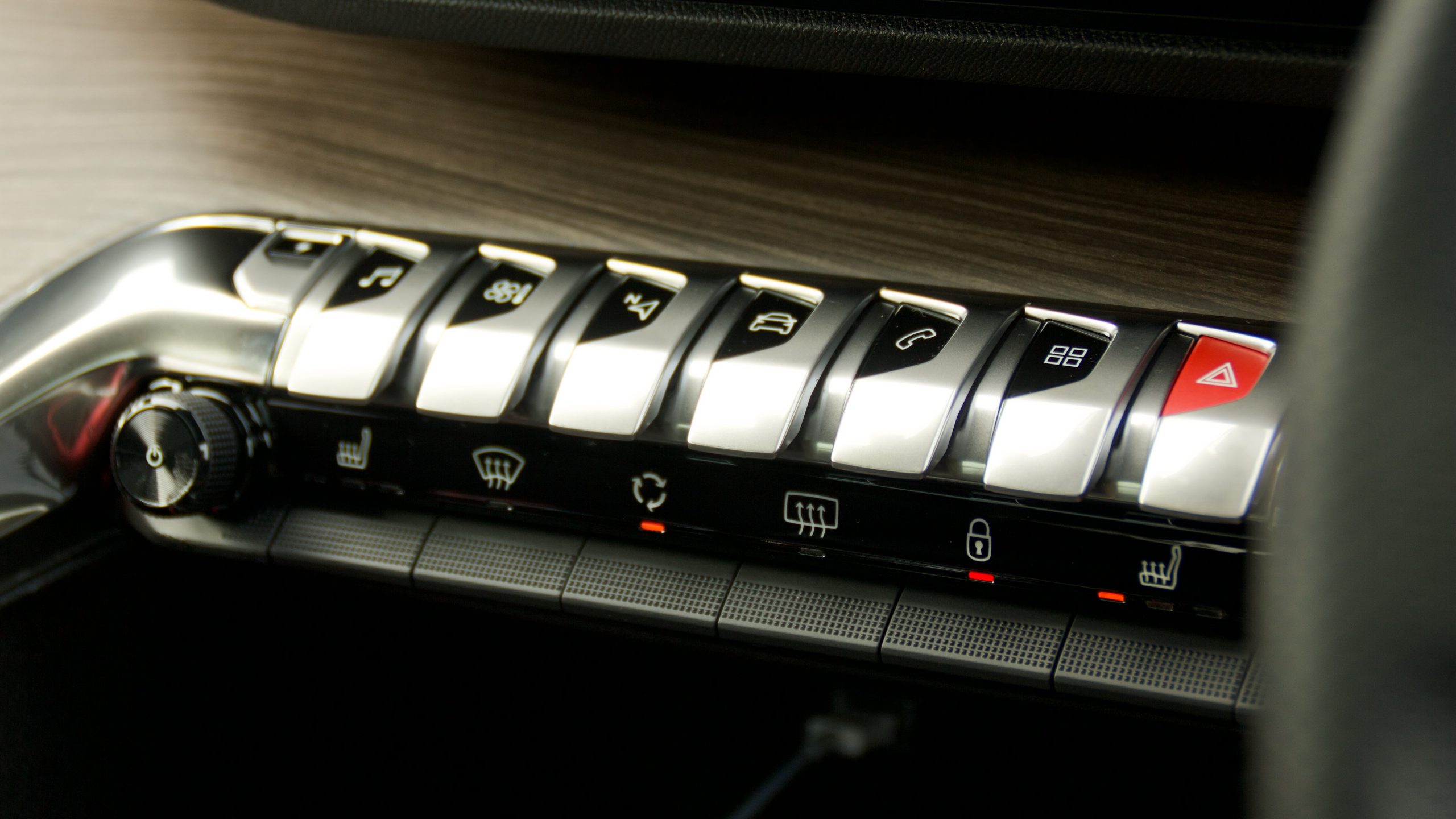
Standard kit includes 19-inch alloy wheels, all-LED exterior lighting, LED front and rear daytime running lights, auto lights and wipers, a black roof with black roof rails, a panoramic sunroof, nappa leather upholstery, dual-zone climate control with rear vents, a 10-way electric driver’s seat with memory and massaging functionality, a 10-inch touchscreen with wired Apple CarPlay and Android Auto, satellite navigation, digital radio, a 12.3-inch digital driver’s display, keyless entry and start, heated and auto-folding mirrors, an electric tailgate with kick-to-open functionality.
Safety equipment includes six airbags, auto emergency braking (AEB) with cyclist and pedestrian detection, forward collision warning, driver attention alert, blind-spot monitoring, speed sign recognition, lane keep assist with lane position assist and lane departure warning, auto high beam, adaptive cruise control with stop and go functionality, automatic parking, front and rear parking sensors and a front and rear camera (though no side ones).
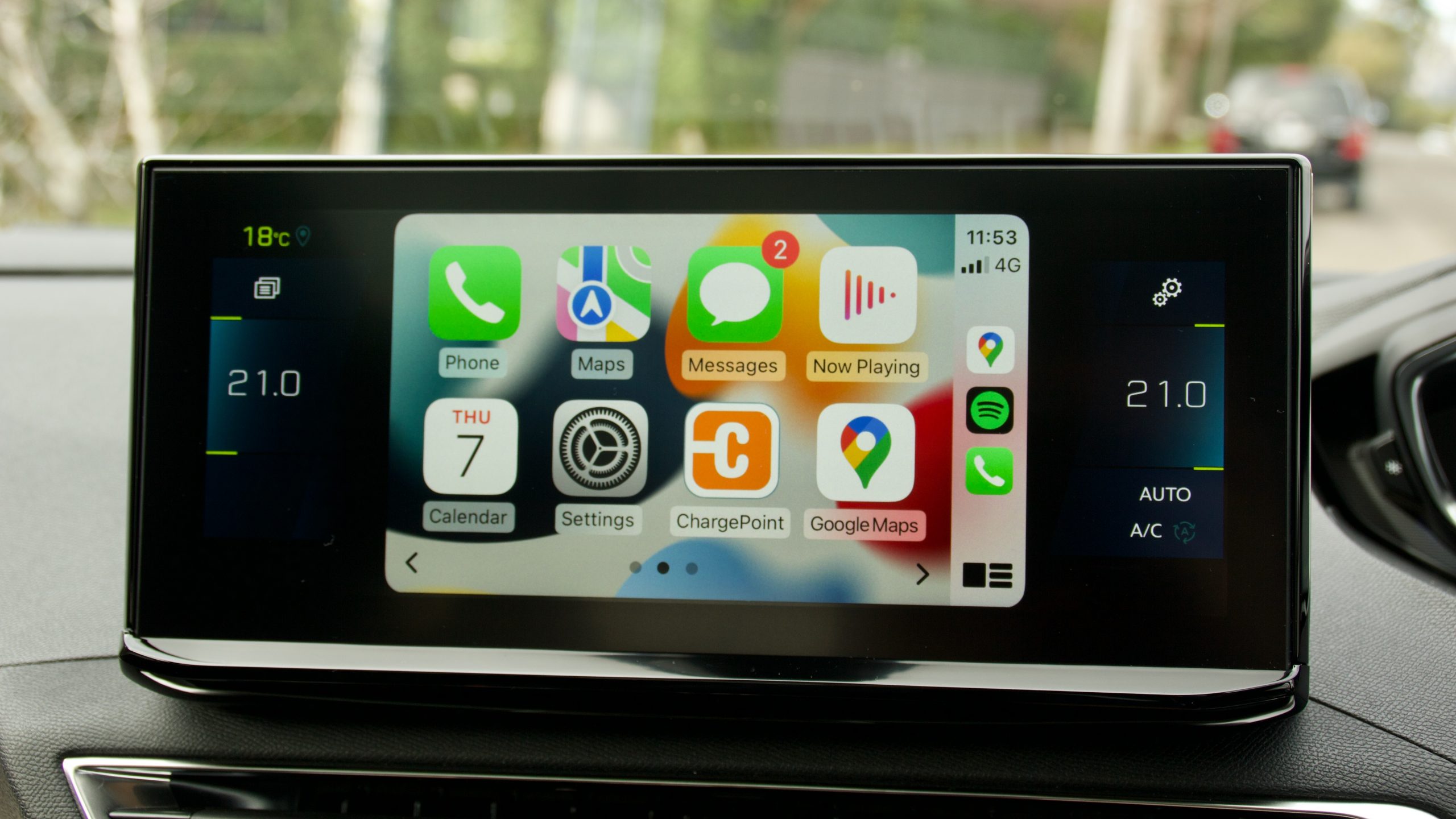
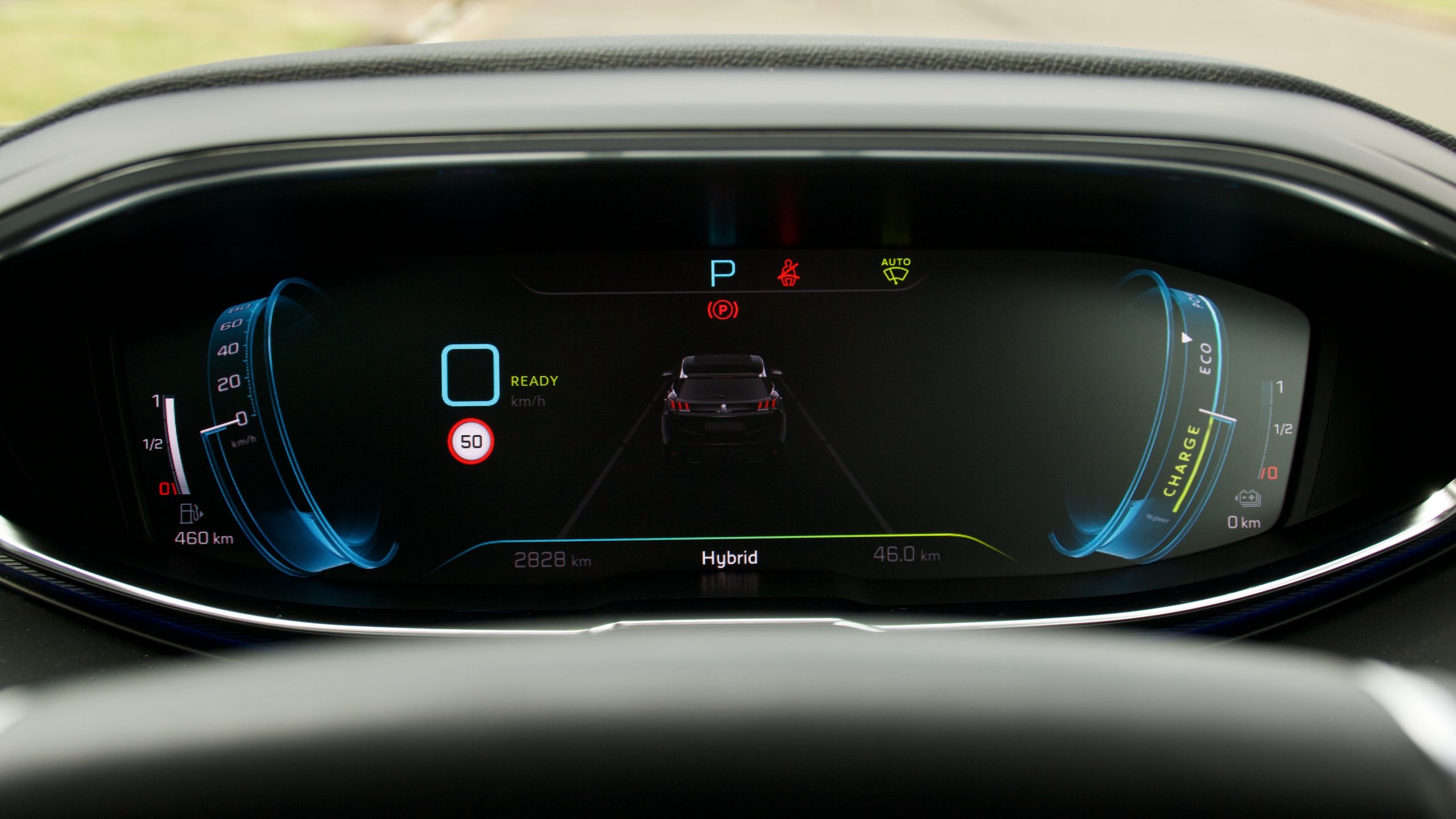
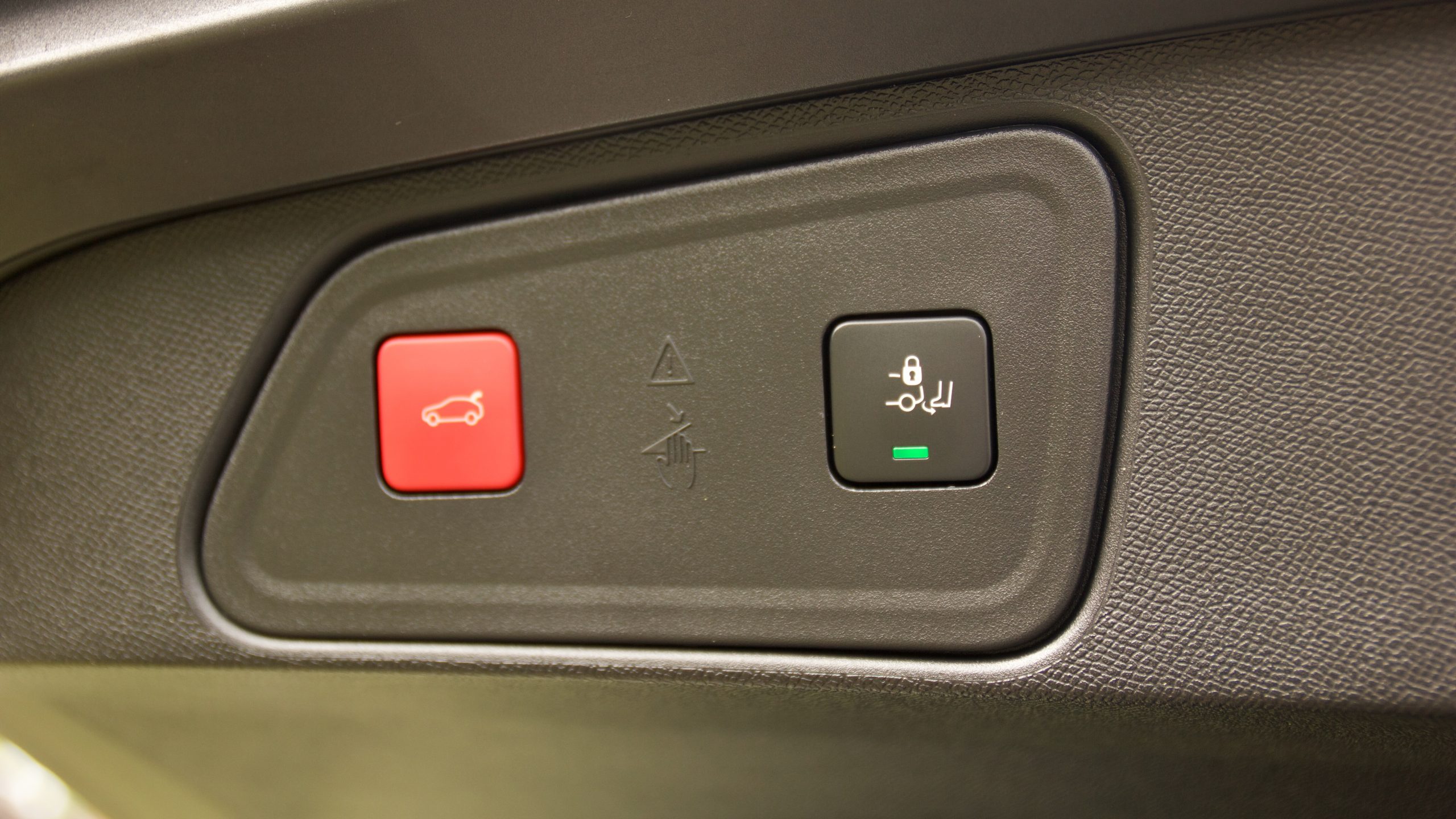
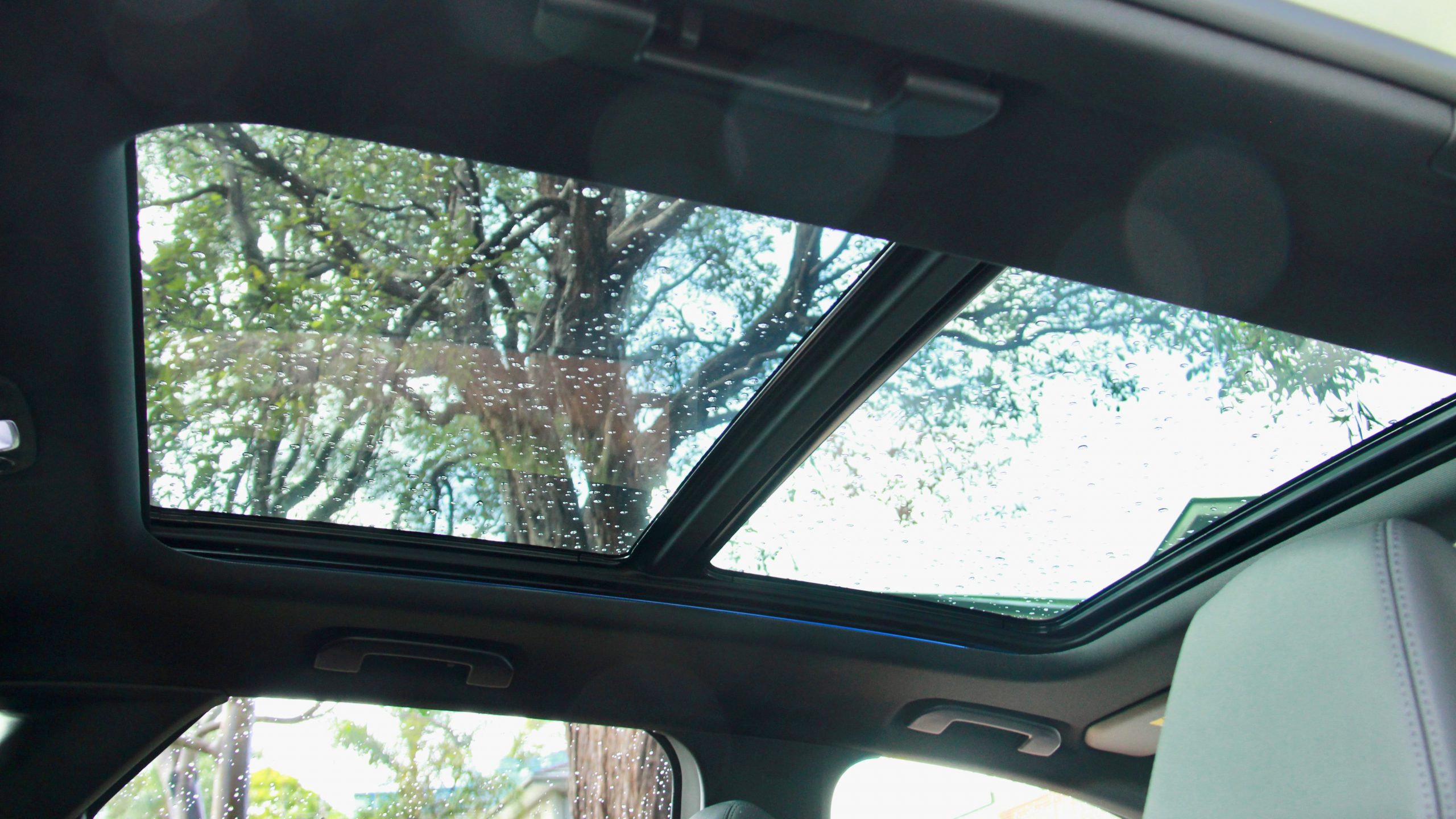
The only non-cost colour available on the 3008 GT Sport Plug-In Hybrid is ‘Celebes Blue’, while ‘Artense Grey’, ‘Platinum Grey’ and ‘Nera Black’ are $690 extra, while ‘Ultimate Red’, ‘Vertigo Blue’ and our test car’s ‘Pearl White’ are $1,050 extra. The sole interior colour is black.
Competitors to the 3008 PHEV are still few and far between, though there are still options. There’s the new Ford Escape PHEV (from around $60,000 drive away), the Mini Countryman SD PHEV (from $70,500 drive away), Mitsubishi Eclipse Cross PHEV (from $54,490 +ORC in top spec Exceed form) and its new Outlander PHEV sibling (from $68,490 +ORC in top-spec Exceed Tourer form), while the MG HS Plus EV is priced from $48,690 drive away. The Cupra Formentor VZe is due on sale very soon as well, priced from $63,990 drive away, while the much larger Kia Sorento PHEV is priced at $87,500 drive away.
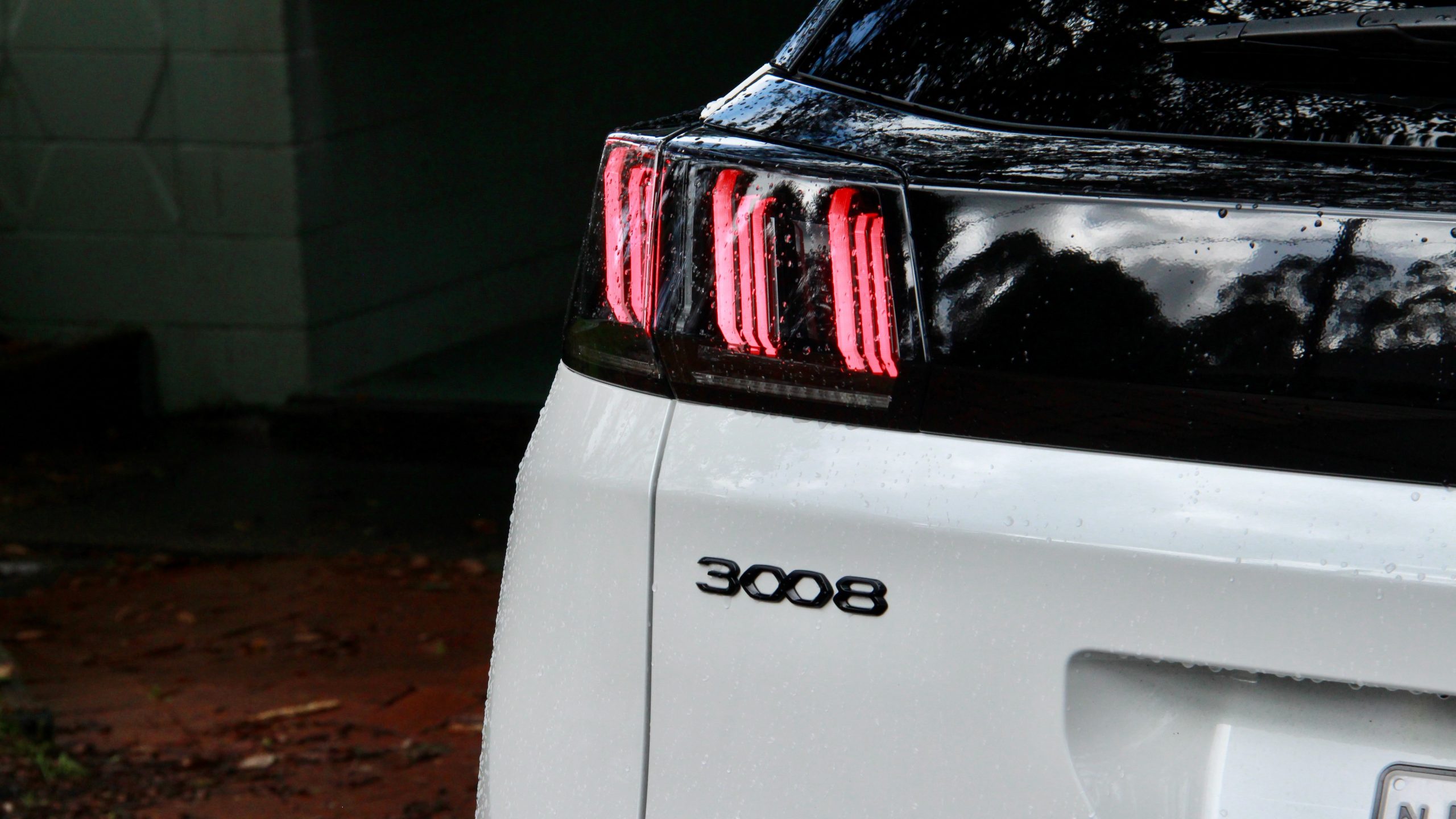
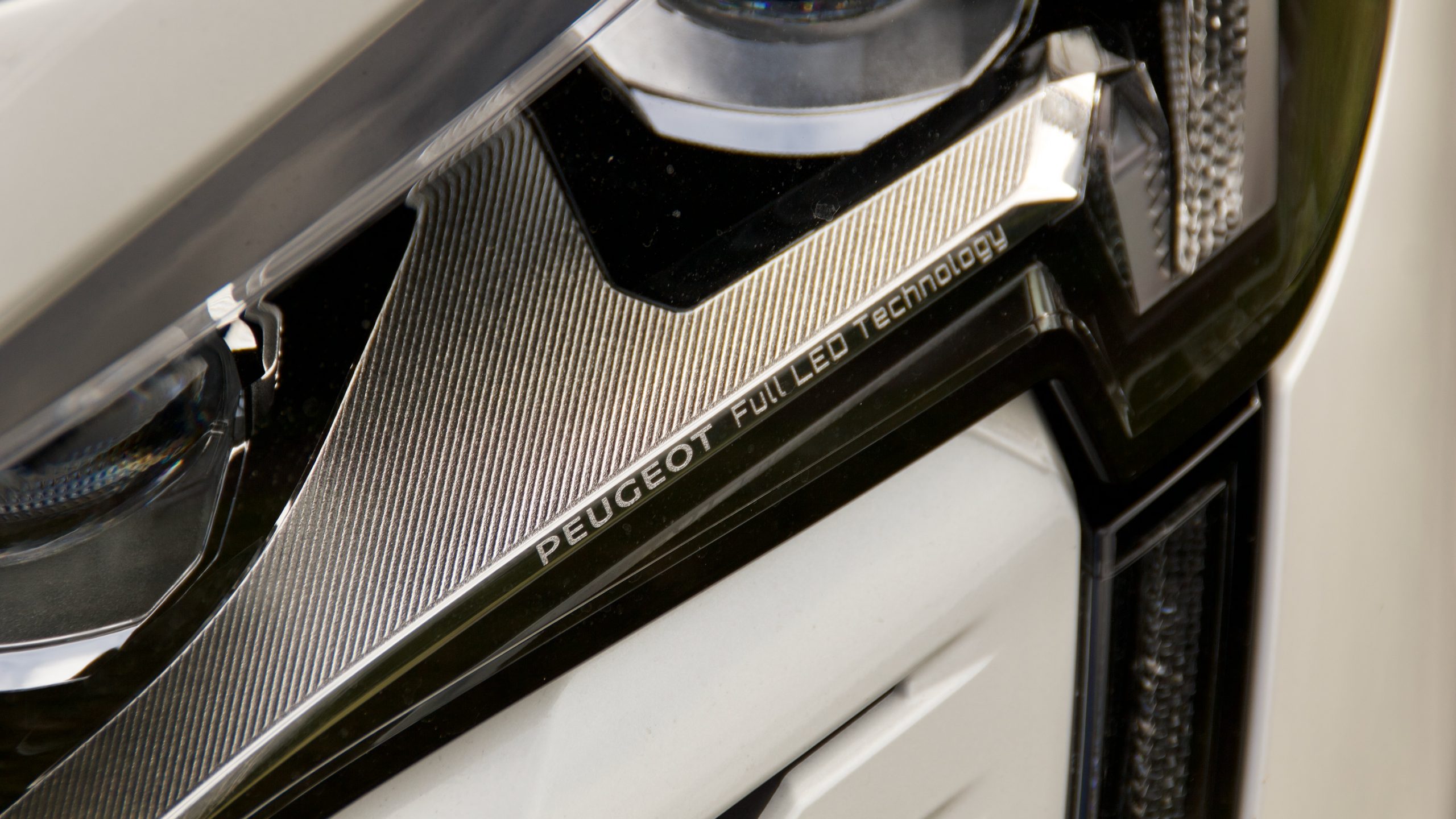
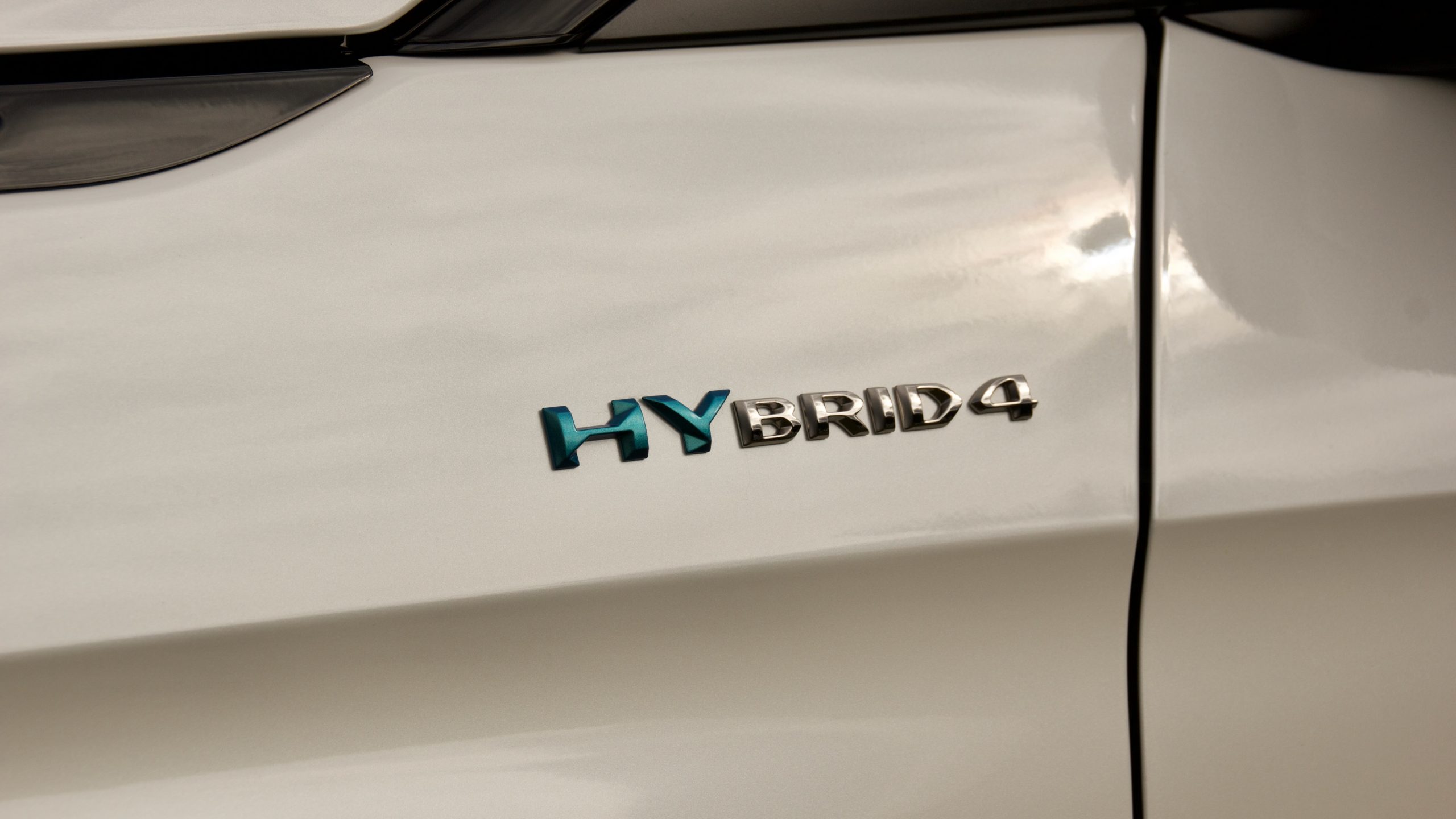
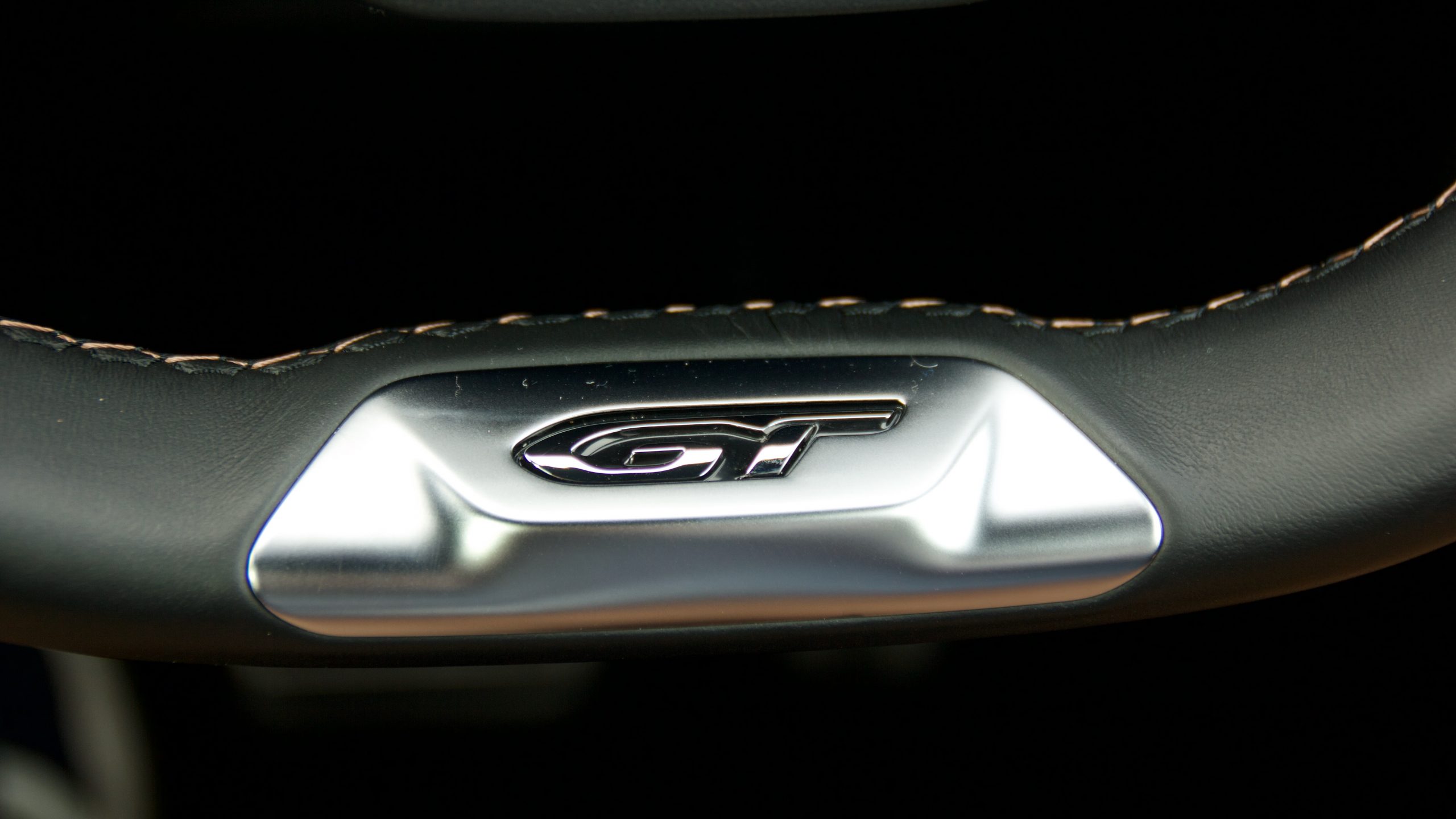
It’s these competitors – and the massive price difference between the PHEV and regular 3008 GT Sport – that put into perspective just how expensive the 3008 PHEV is. For identical equipment, but the PHEV drivetrain and all-wheel drive, Peugeot charges another $23,182 and while the extra performance of the PHEV is appreciated, there’s no way you’d ever make up the cost difference, even if every kilometre driven was in EV mode with free with solar generated electricity. As a performance option in the 3008 range, the aforementioned price gap makes it a pill too bitter to swallow.
Performance & Economy: 7/10
Under the bonnet of the 2022 Peugeot 3008 Plug-In Hybrid is a 147kW/300Nm turbocharged 1.6-litre four-cylinder petrol engine that’s mated to 81kW/320Nm front and 83kW/160Nm rear electric motors. Total output is 222kW of power and 520Nm of torque, while the performance is put to the road through an eight-speed automatic transmission and – for the first time in the 3008 – all-wheel drive through the electric rear motor.
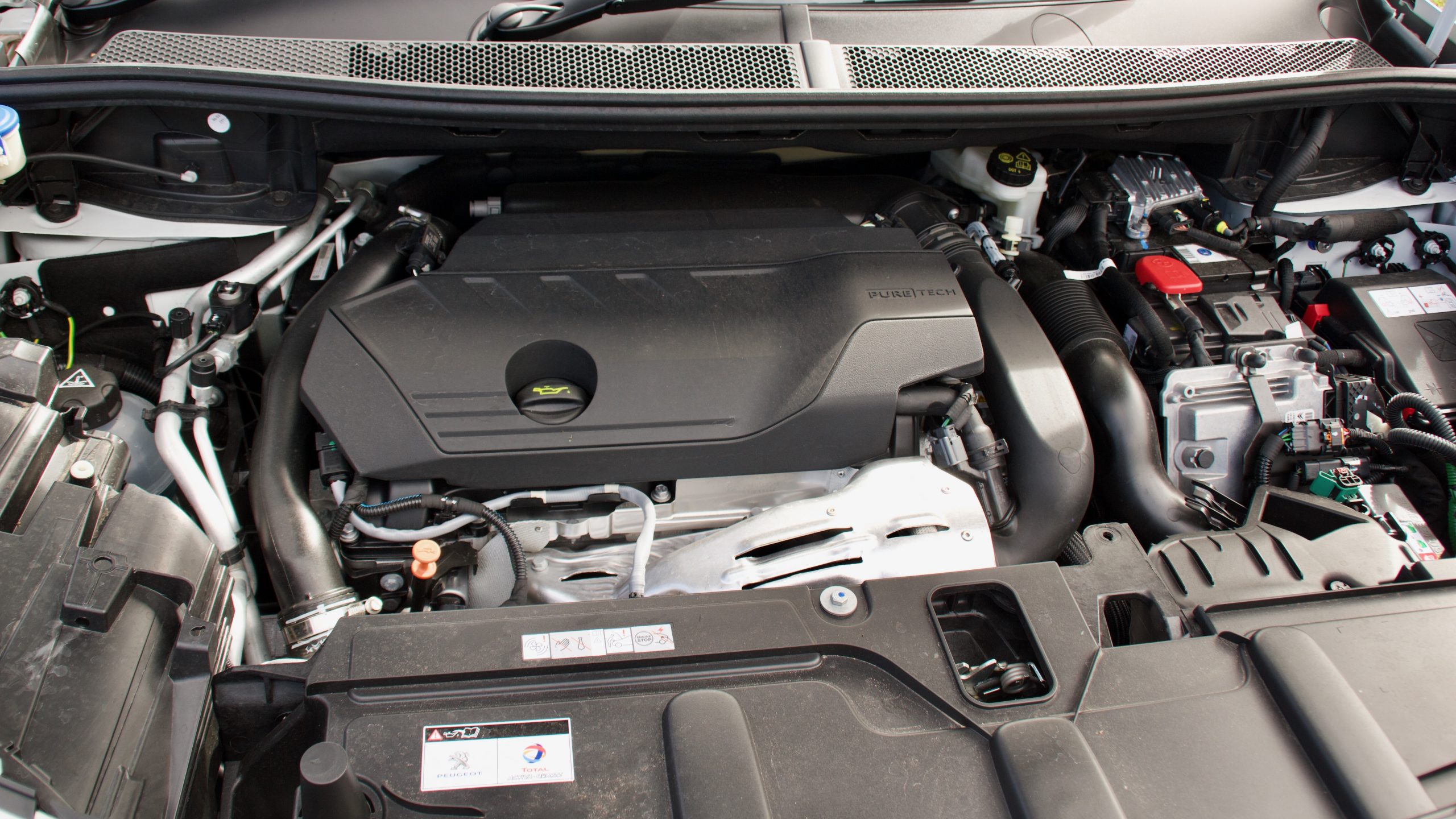
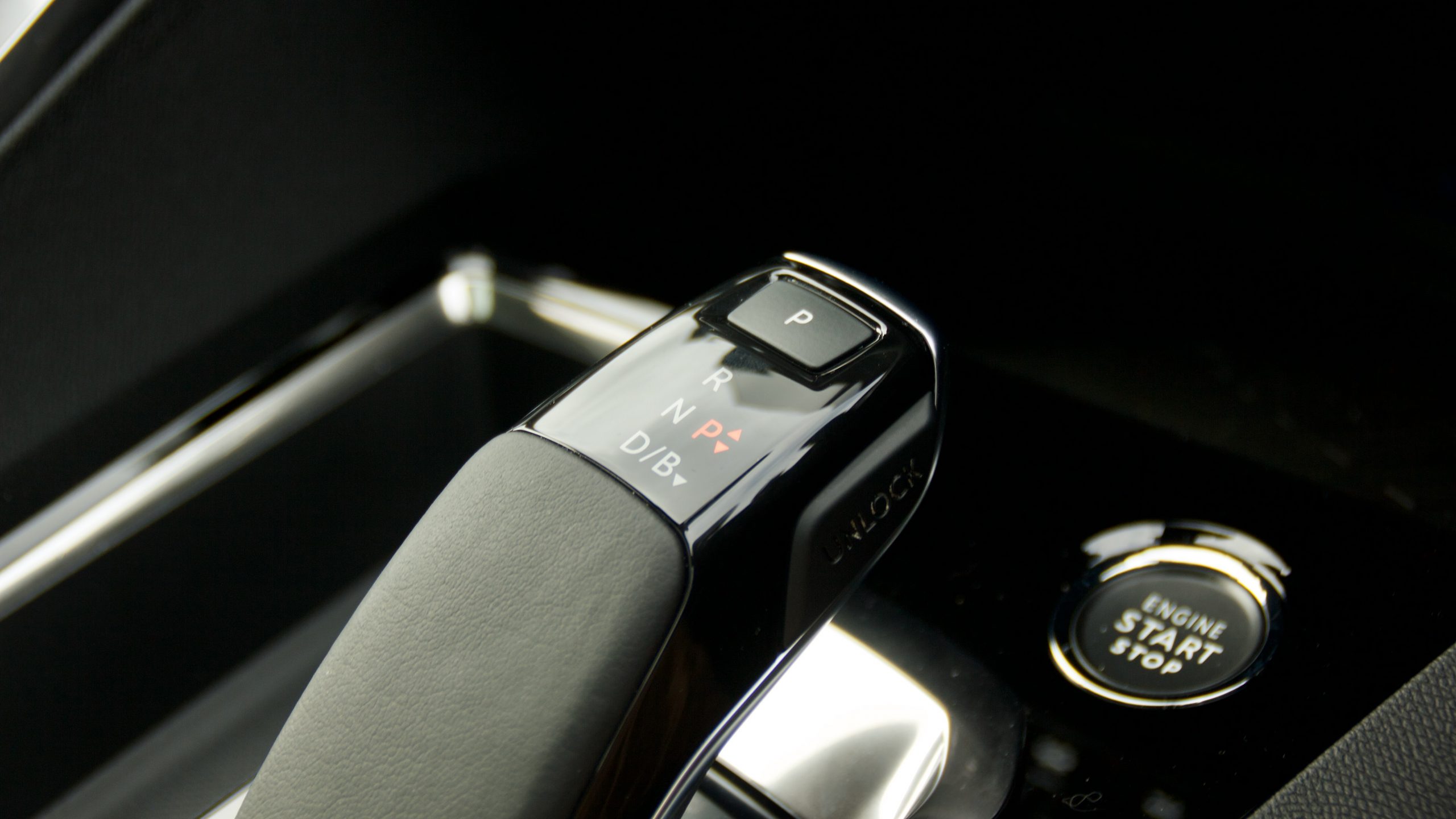
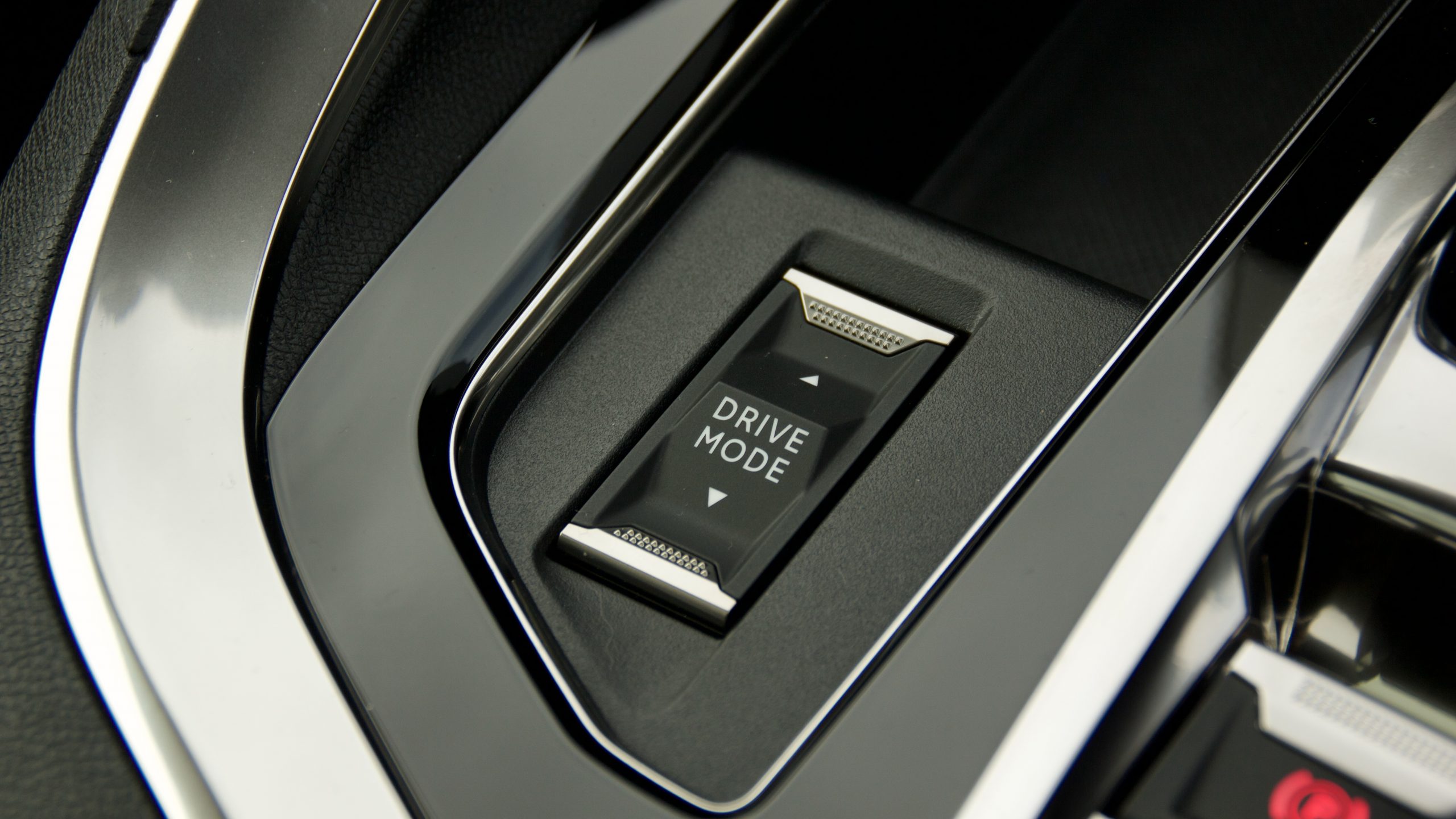
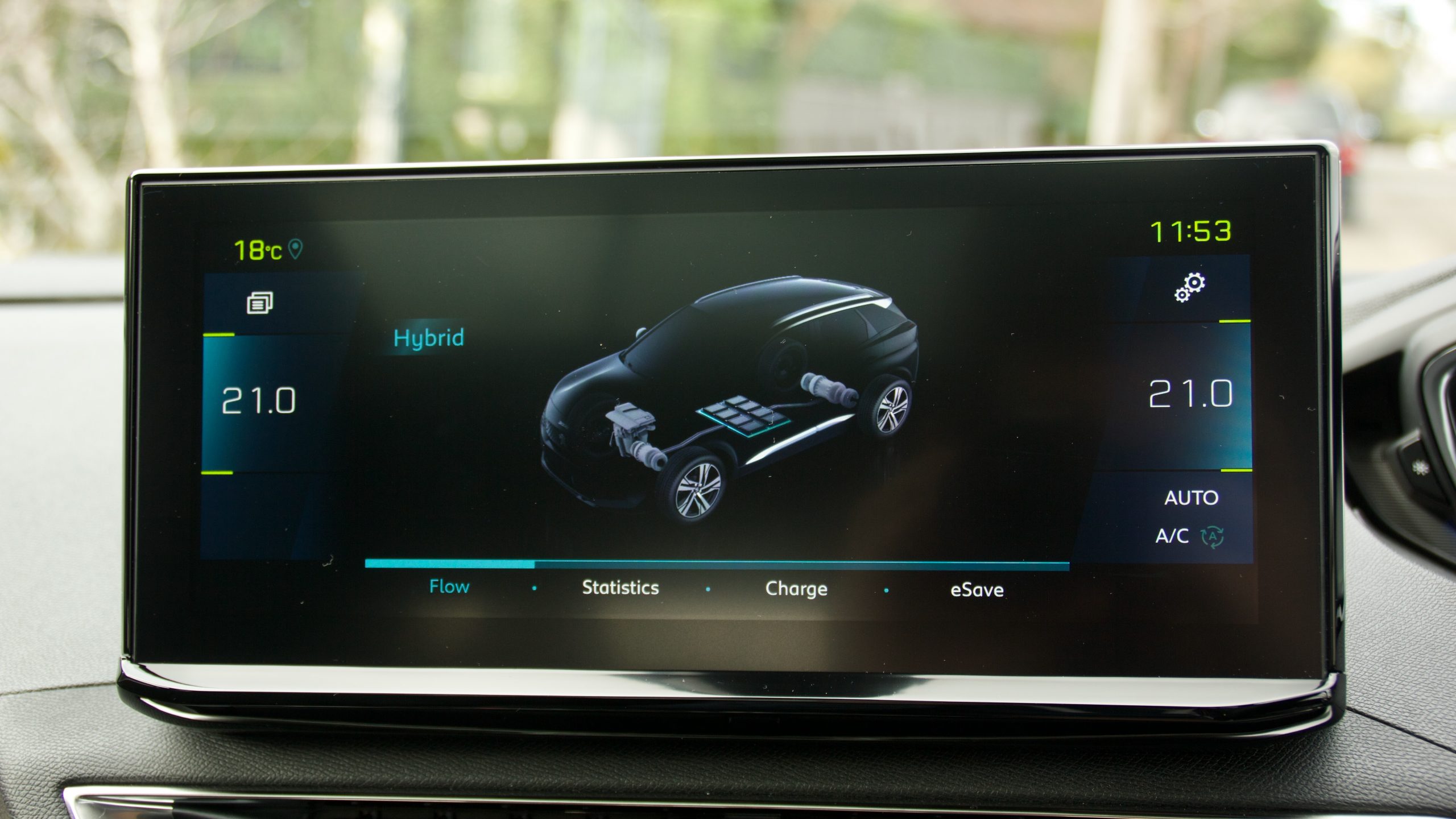
The claimed 0-100km/h sprint time for the 3008 Plug-In Hybrid is a quick 5.9 seconds, and once it’s on the boil, it feels even quicker than that. Around town the hybrid system works quite well. The regenerative braking can be enhanced by using ‘B’ mode, which gets more energy from coasting and braking. But unlike a Toyota hybrid, the Peugeot uses a regular eight-speed torque converter automatic transmission – ironically made by Toyota’s Aisin – and that enhances drivability because unlike a CVT, acceleration isn’t accompanied by droning.
Peugeot claims that the 3008 Plug-In Hybrid is able to travel up to 60km on a charge, though we picked our car up with a full battery and it gave us only 29km of electric driving range. What makes that worse is that the 3008 can accept charging at up to only 3.4kW, or barely more than a wall socket. This means that there’s almost no benefit to using a public charger – we used a 22kW charger for three hours for research’s sake and got only 13km of electric driving range. Peugeot supplies a household socket charging cable, though not one that will fit into AC chargers, which limits public charger use significantly (ask us how we know…).
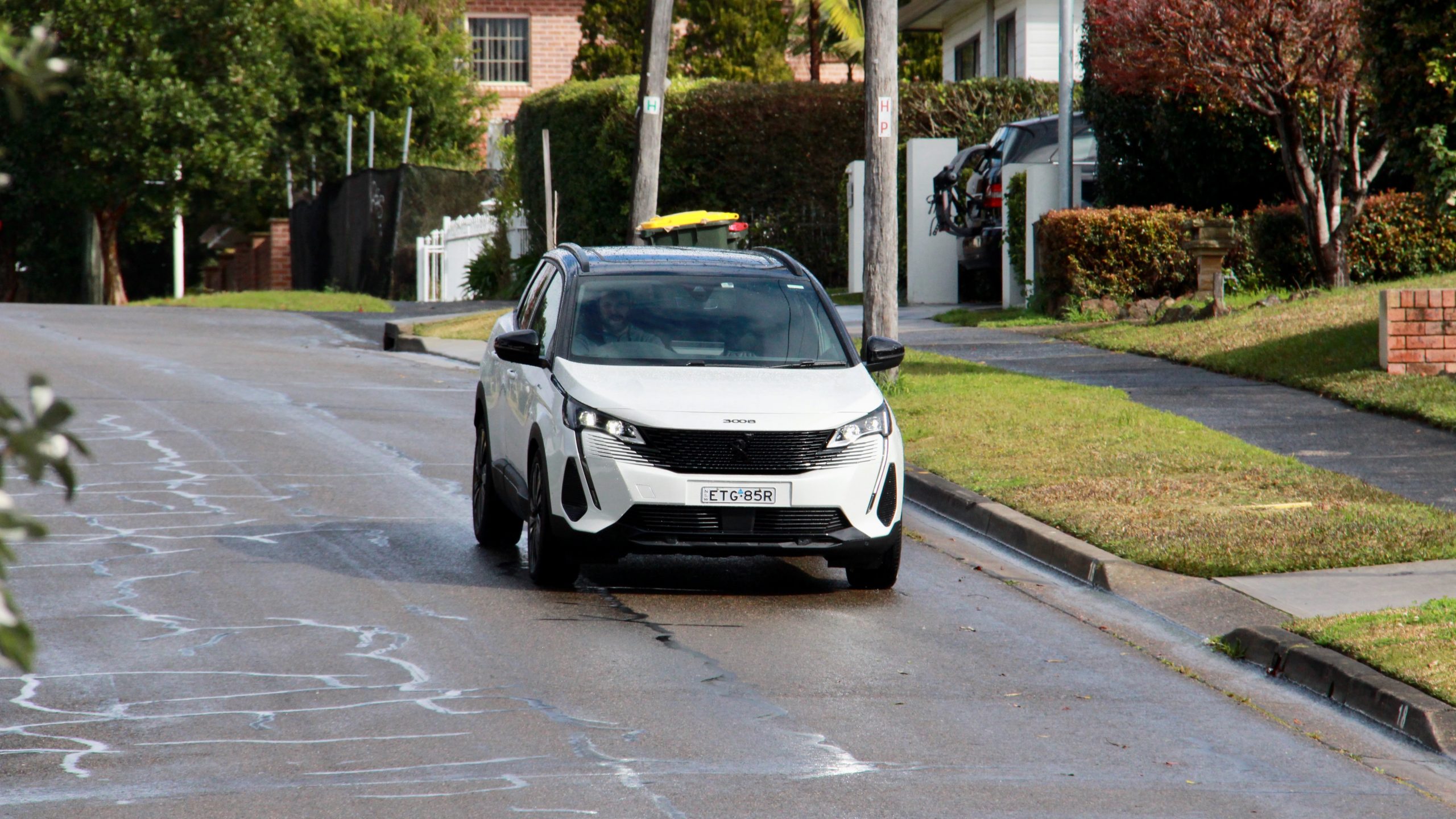
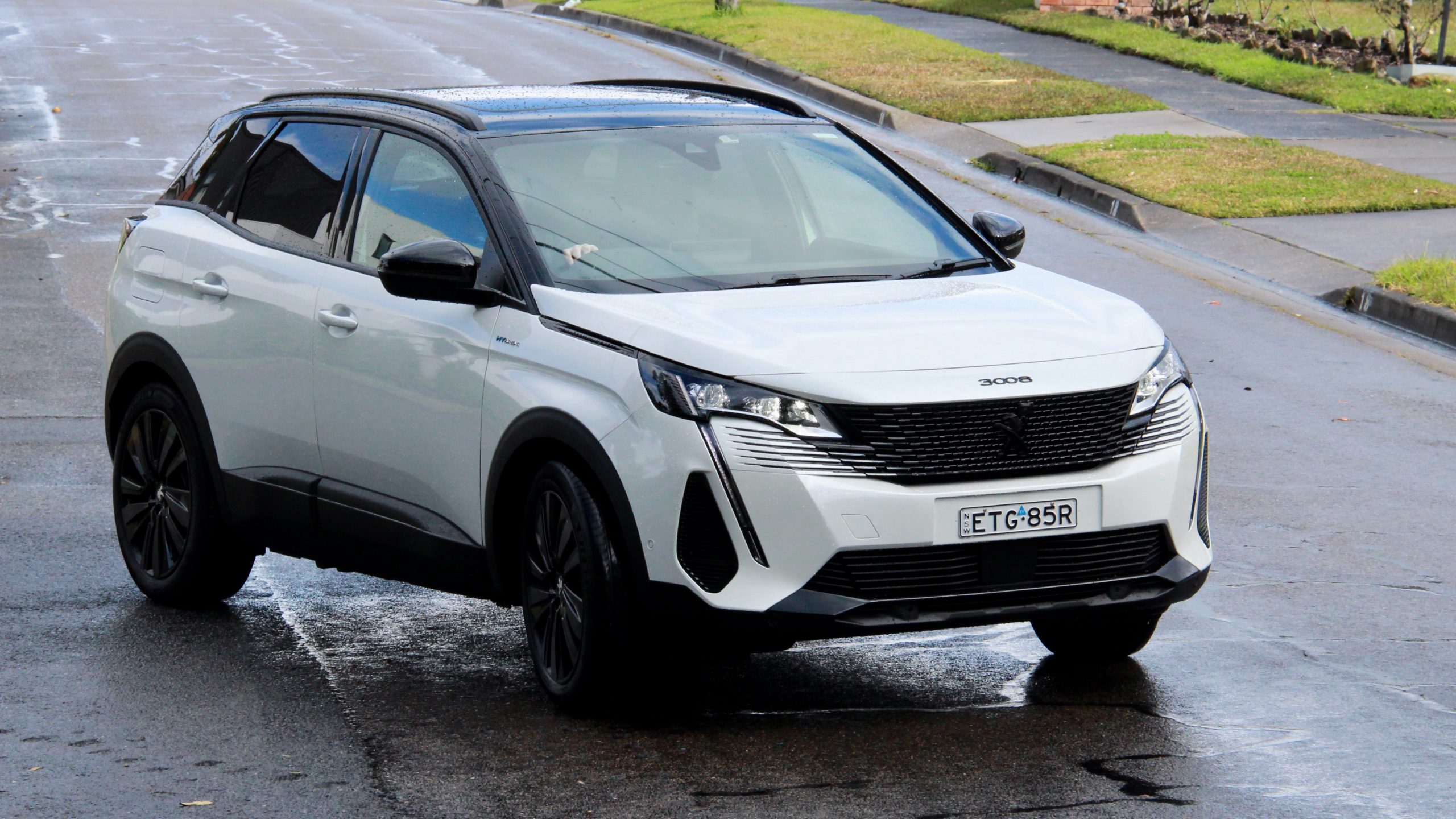
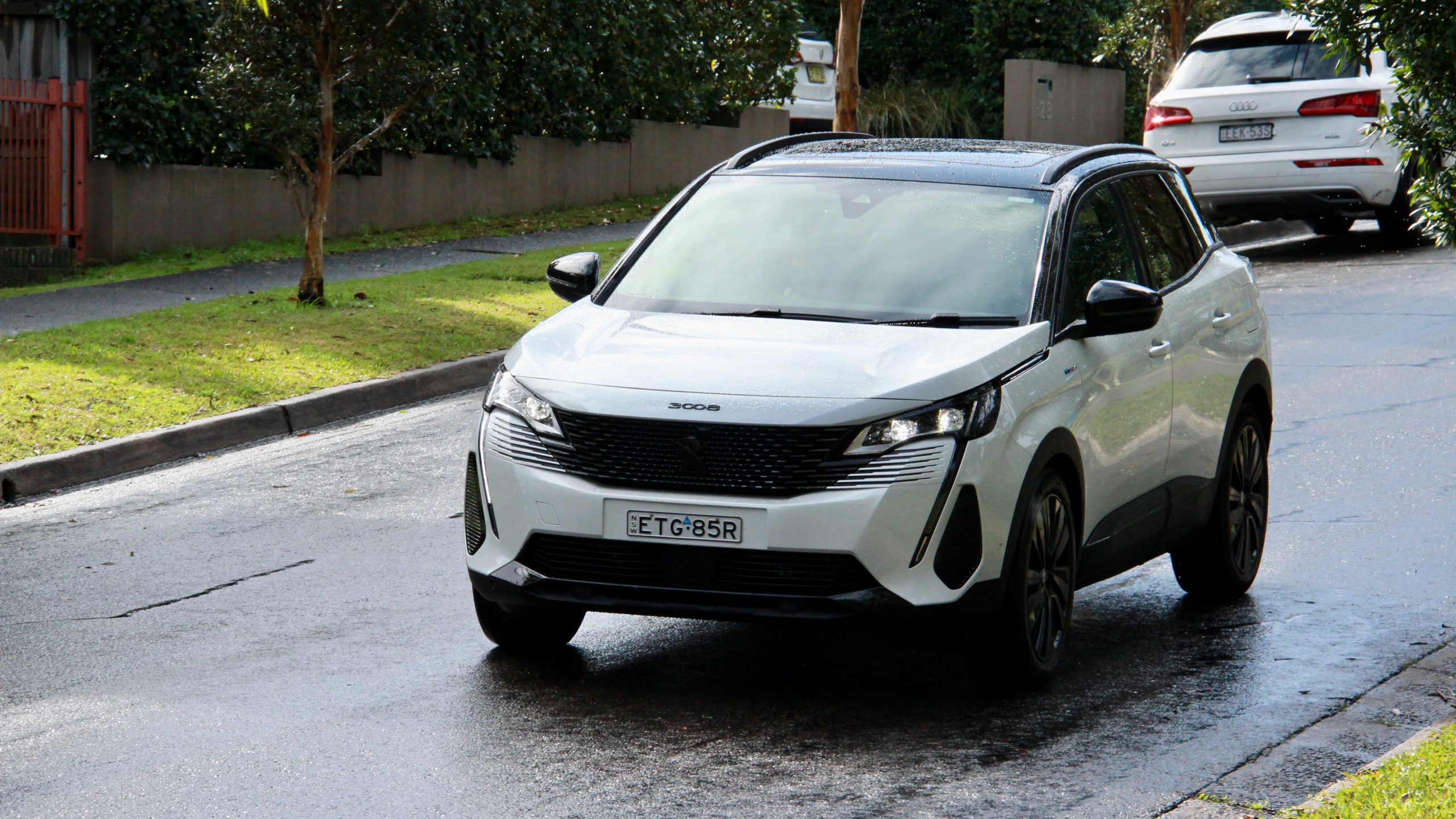
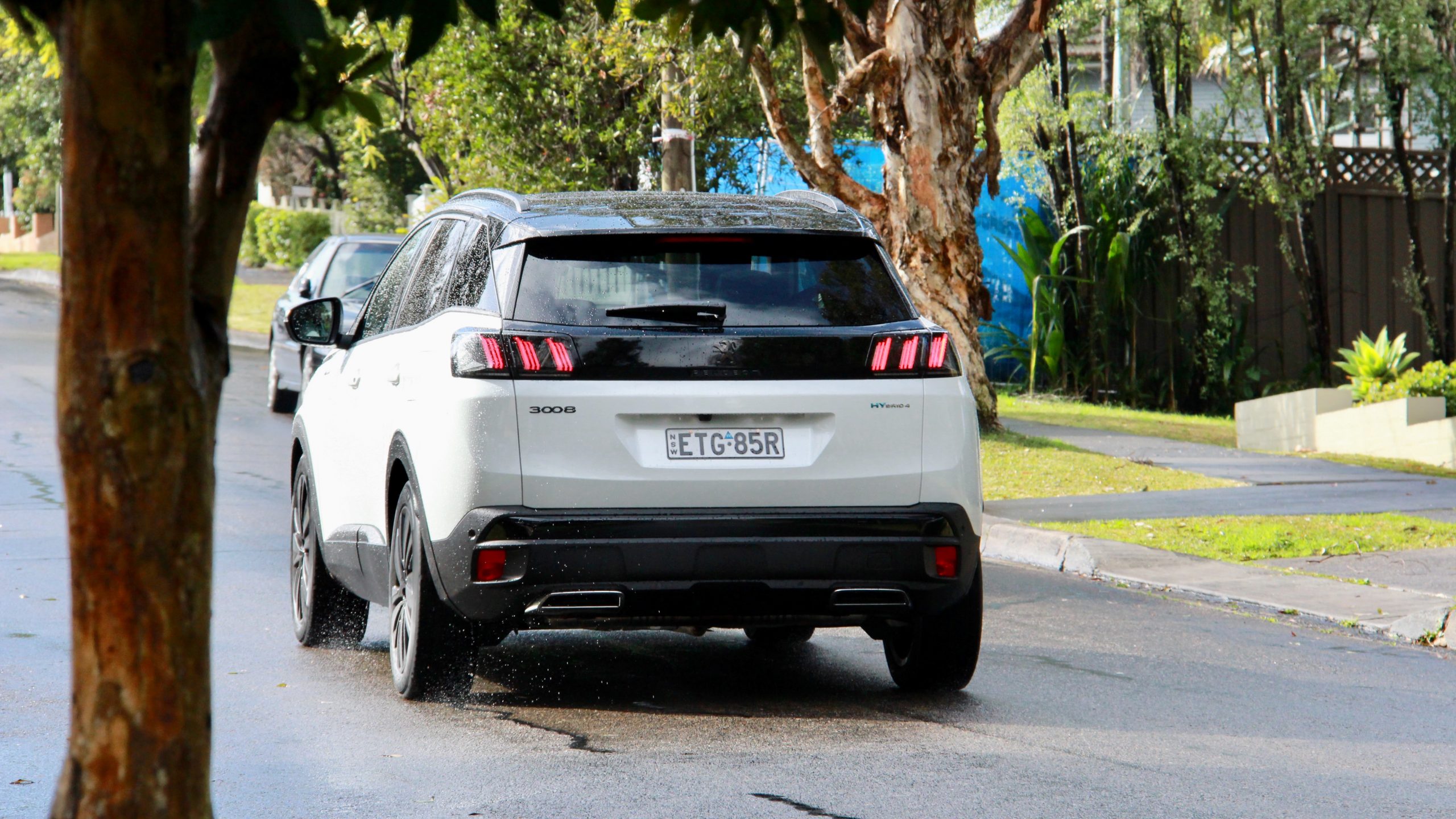
The 3008 in Europe can charge at up to 7.4kW, which would make it far more practical in Australia. Until that happens, you’re best to charge it at home overnight, and a full charge occurs in around 5.5 hours. If you can’t charge it at home, you’ll be relying on the petrol engine a lot more, like us. Peugeot claims that the 3008 Plug-In Hybrid will use 1.6L/100km on a combined cycle – if you’re able to charge it – and in our testing, it used 5.8L/100km, which is more than the non-plug-in hybrid RAV4 but not too shabby for a 1.8 tonne 300hp SUV. It must use minimum 95RON premium unleaded and has a 53-litre fuel tank.
Ride & Handling: 8/10
The regular Peugeot 3008 drives well, and it’s no different for the Plug-In Hybrid. You can definitely feel the extra 418kg of weight of the PHEV – 1,815kg versus 1,397kg (tare) – in driving as it’s just not as nimble as its petrol-powered sibling. But the PHEV is the first 3008 to have independent rear suspension, which has largely negated the extra weight of the PHEV’s batteries and extra motors. As such, it feels a touch firmer, particularly on larger bumps, but it’s still entirely comfortable.
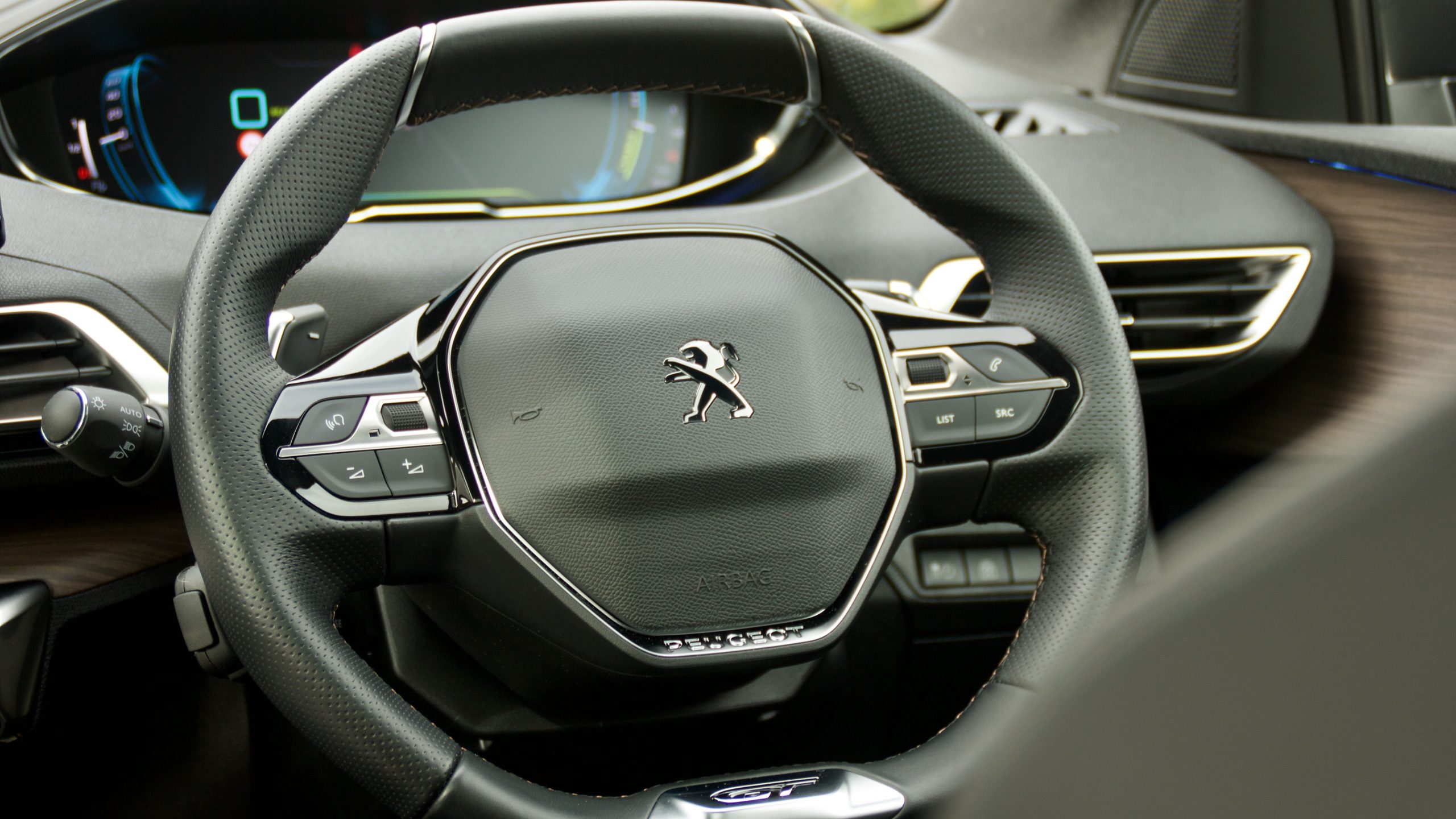

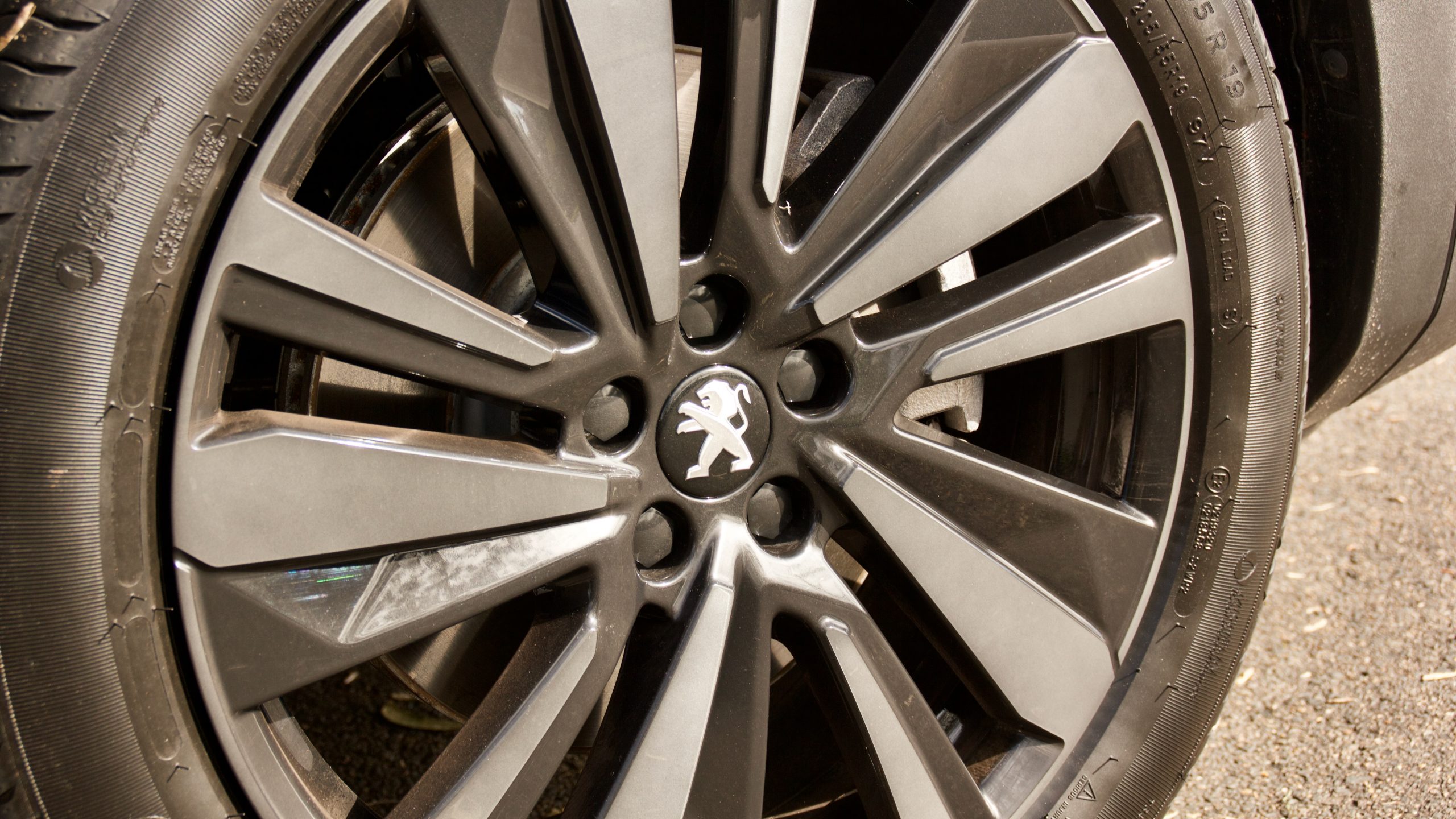
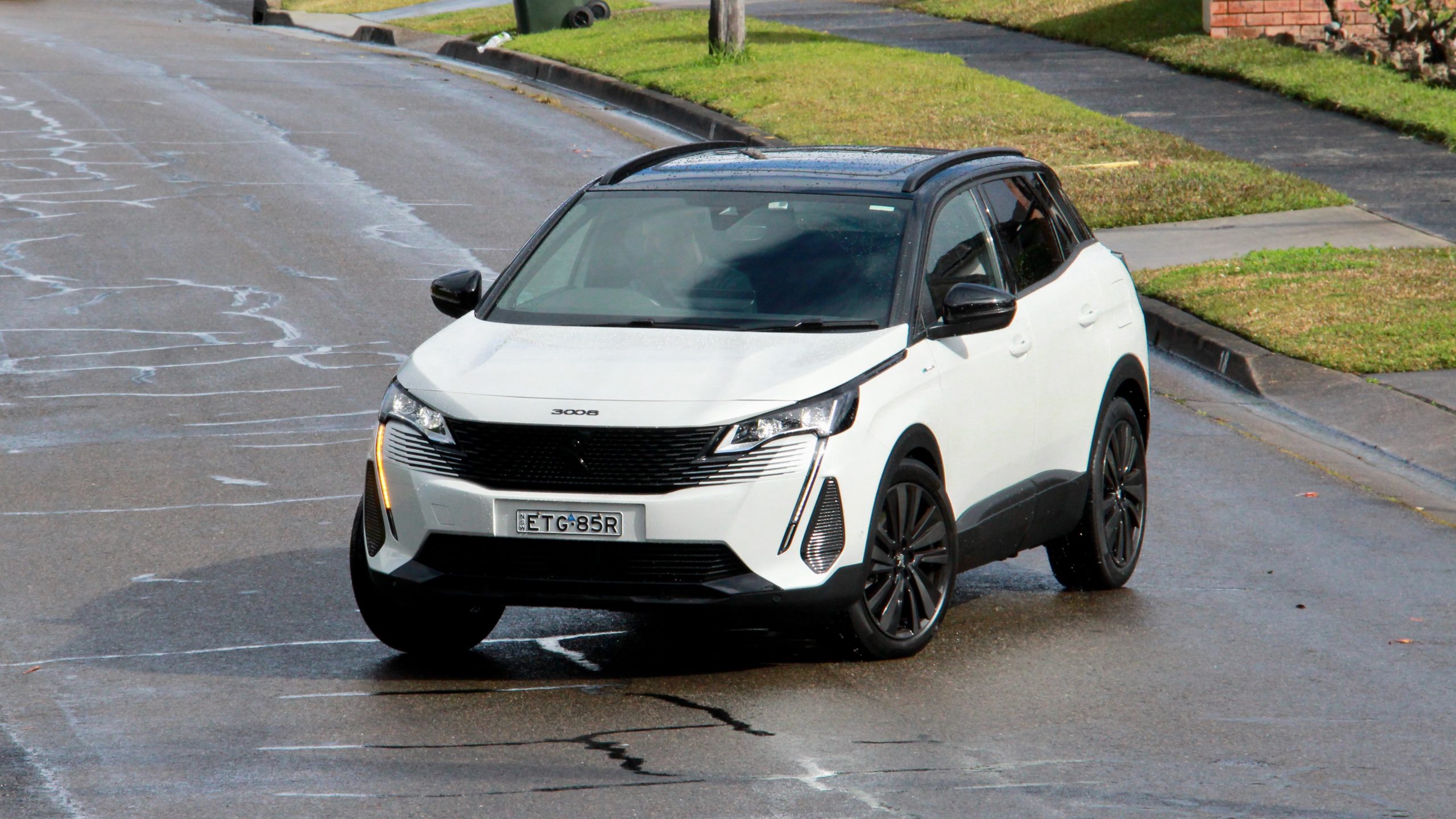
Elsewhere, the steering is quite light and somewhat feelsome, the visibility is reasonable and road noise levels are low. We also like Peugeot’s active safety systems as they’re quite subtle, and only feel the need to shout at you in a dire emergency. The cruise control wand is hidden from view by the steering wheel, but once you’re used to it, it becomes second nature to use. Special mention must go to the washer jets that are located inside the wipers, and headlights that are activated automatically by the wipers too – all cars should have these features.
Interior & Practicality: 9/10
Despite launching six years ago, inside the 2022 Peugeot 3008 Plug-In Hybrid feels fresh and still offers the most interesting design in the mid-size SUV segment. The quality is fantastic as well, with liberal use of soft-touch plastics, sumptuous quilted Nappa leather upholstery, appealing wood and lots of funky touches, such as the piano keys underneath the touchscreen. Put simply, the quality inside the 3008 is best in class, and it’s a testament to how hard Peugeot has worked on its design over the past five years.
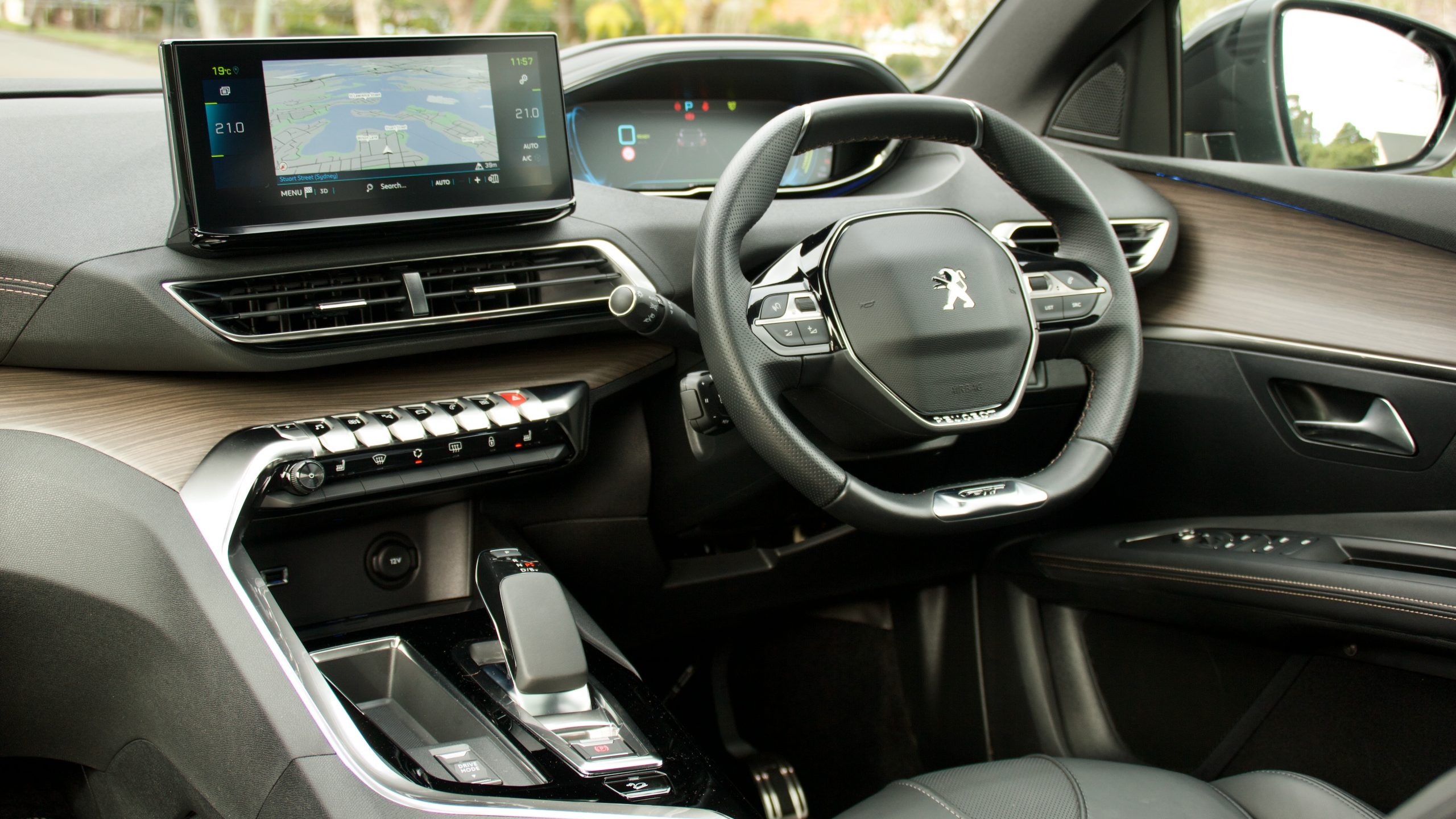
Peugeot’s ‘i-Cockpit’ digital driver’s display caused some controversy thanks to its unusual layout with the dials mounted above the small steering wheel. This writer quite likes it – the high positioning negates the need to have a heads-up display as the screen is mounted within your line of sight – but people shorter than my six-foot frame may not. The screen itself is crisp and it also features a map if you want it – it’s configurable with many different screen views.
Centre of the 3008’s cabin is a 10-inch touchscreen that features wired Apple CarPlay and Android Auto, as well as satellite navigation and digital radio. Unlike the pre-updated 3008’s smaller 8.0-inch screen, the new version shows the set temperature on each side of the main audio display – you still annoyingly have to go into another menu to change it, though. The screen’s resolution could be sharper as well, and every control requires a hard press. But worst of all is the grainy 360-degree parking camera, which looks positively cartoonish.
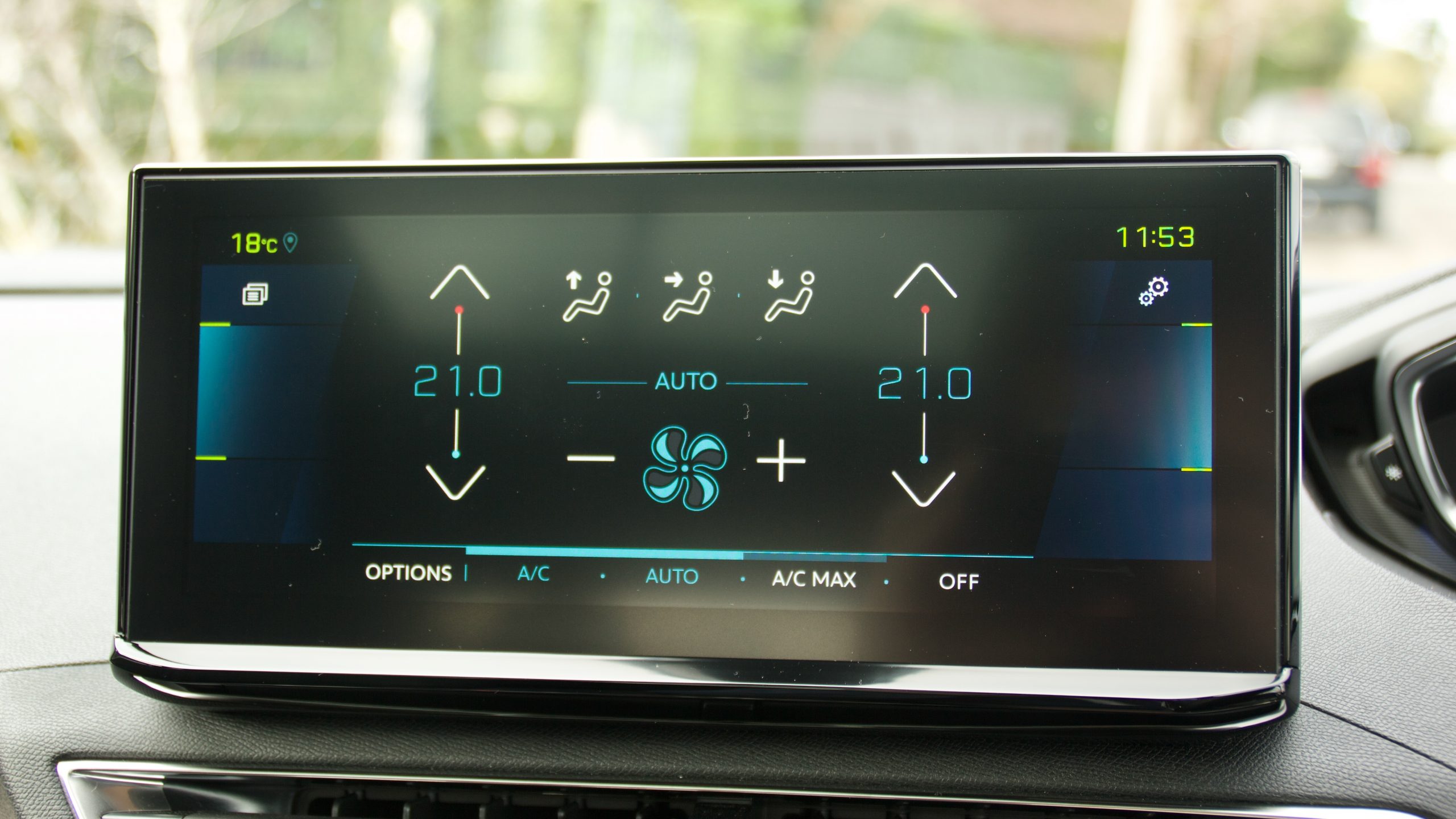
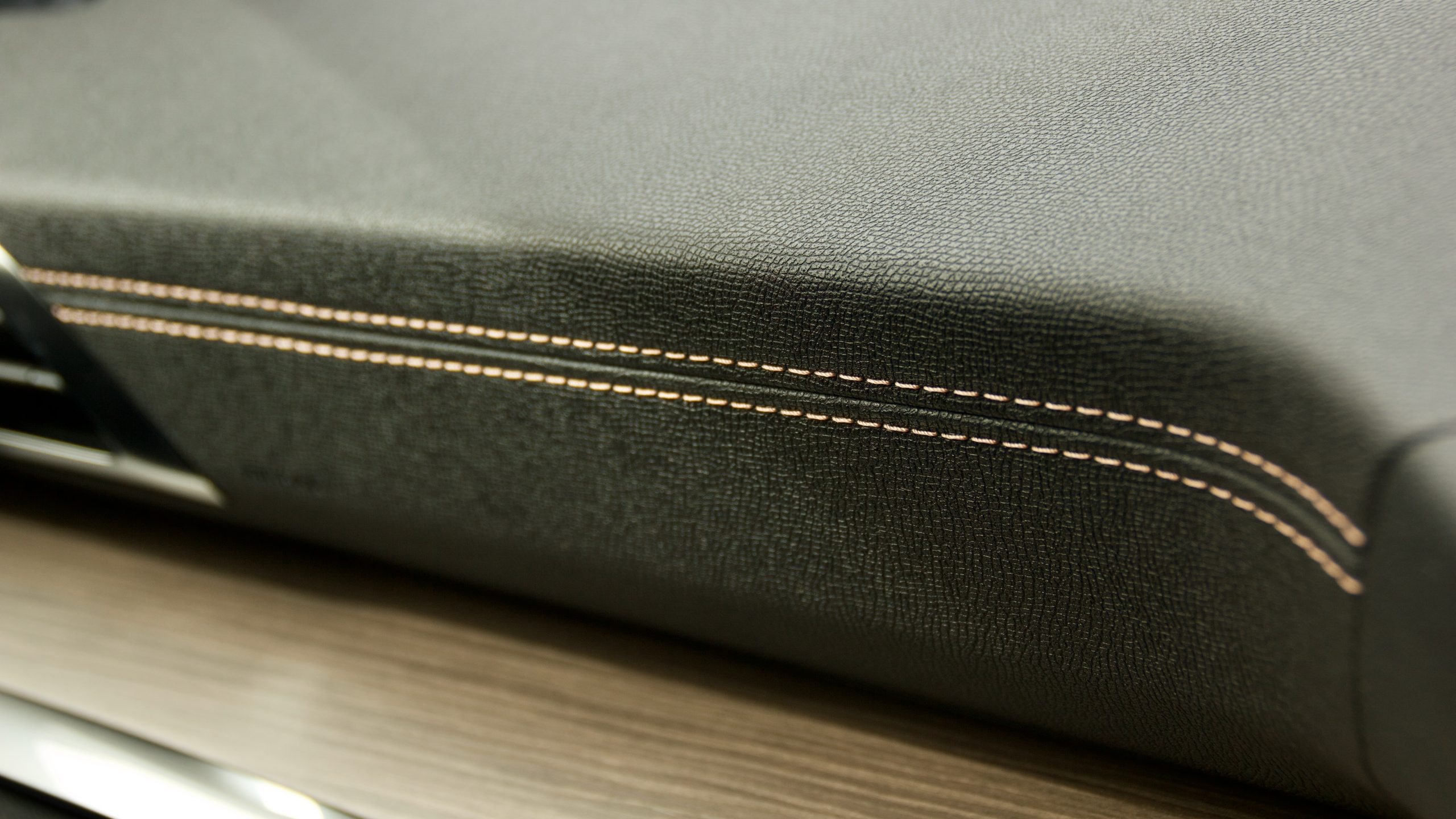
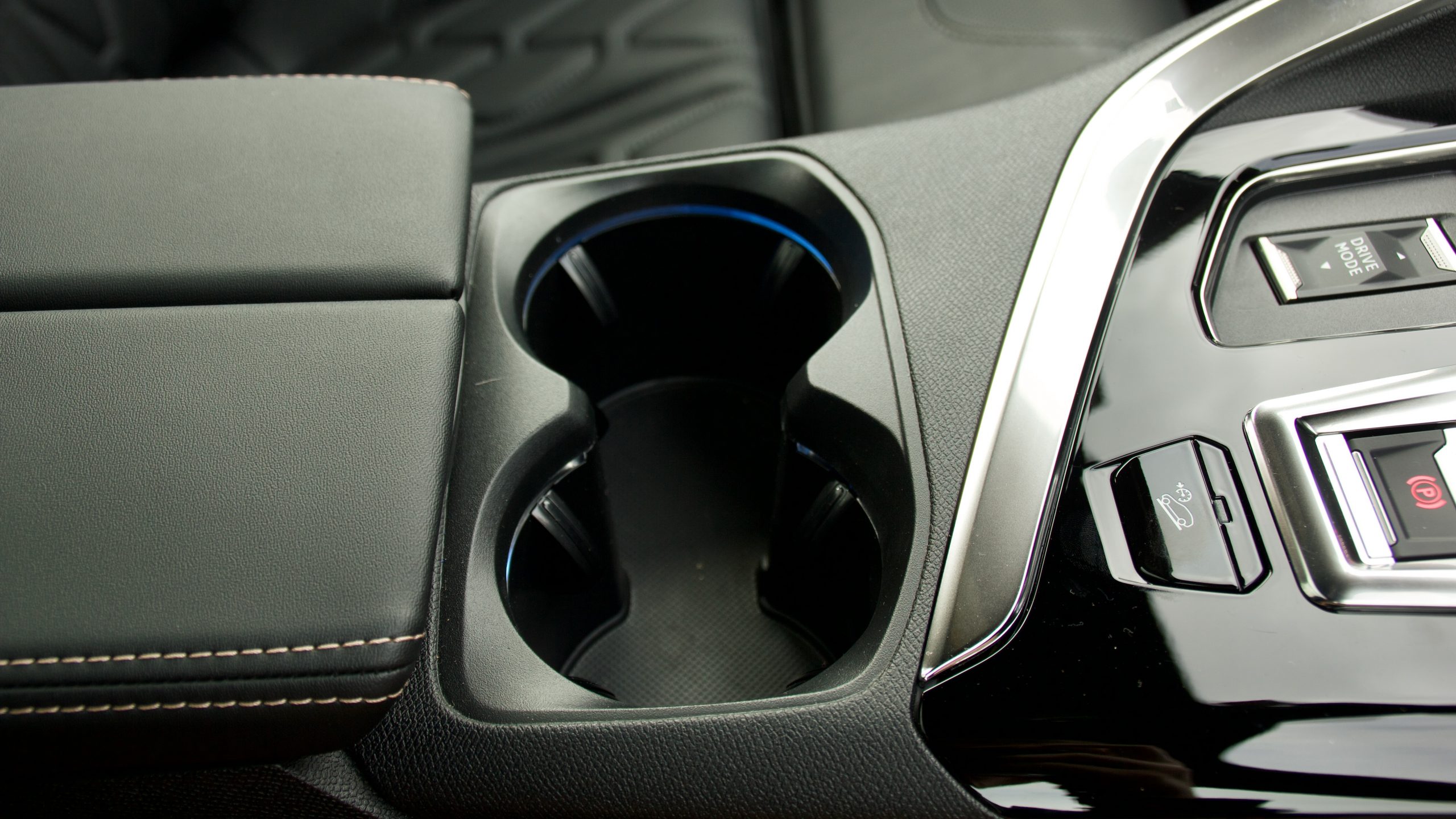
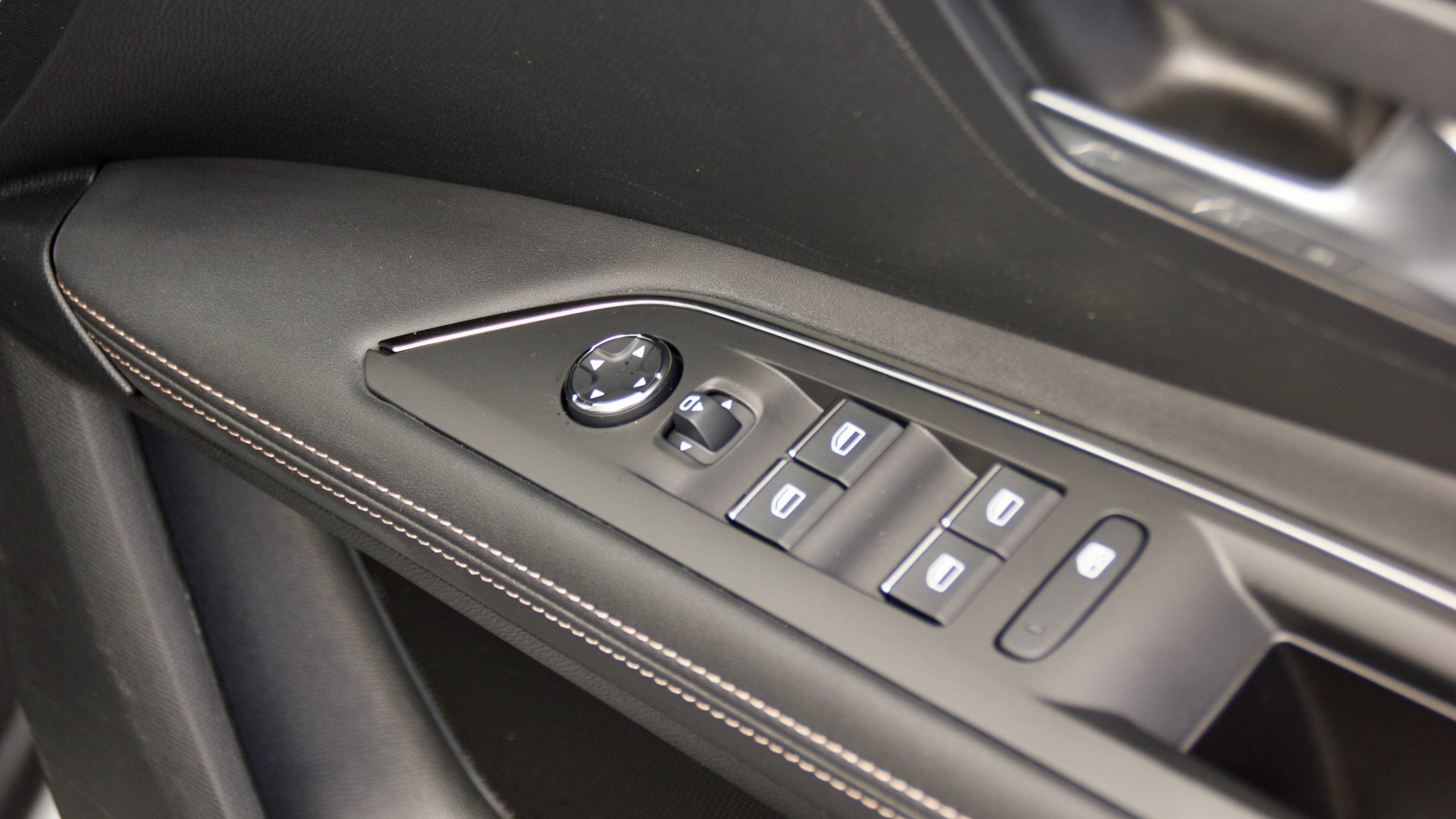
The rest of the 3008’s cabin is positive though. Unlike a lot of past French cars, it’s actually quite a practical space. There are reasonable cupholders, a large tray area under the screen with a wireless phone charger, a huge centre console bin that can fit a laptop, large flock-lined door bins – although, the typically-small right-hand drive conversion glovebox remains.
The rear seat of the 3008 Plug-In Hybrid is comfortable, though not massive. Two adults will be fine, but the raised rear seat height to hide the battery means it’s not quite as comfortable or spacious as the petrol version. The seats are still comfortable, however, and the rear seat remains well featured with a centre arm rest, air vents, two USB-C ports, a 12V socket, the same flock-lined door bins as the front and two map pockets. Heated rear seats do not feature, however.
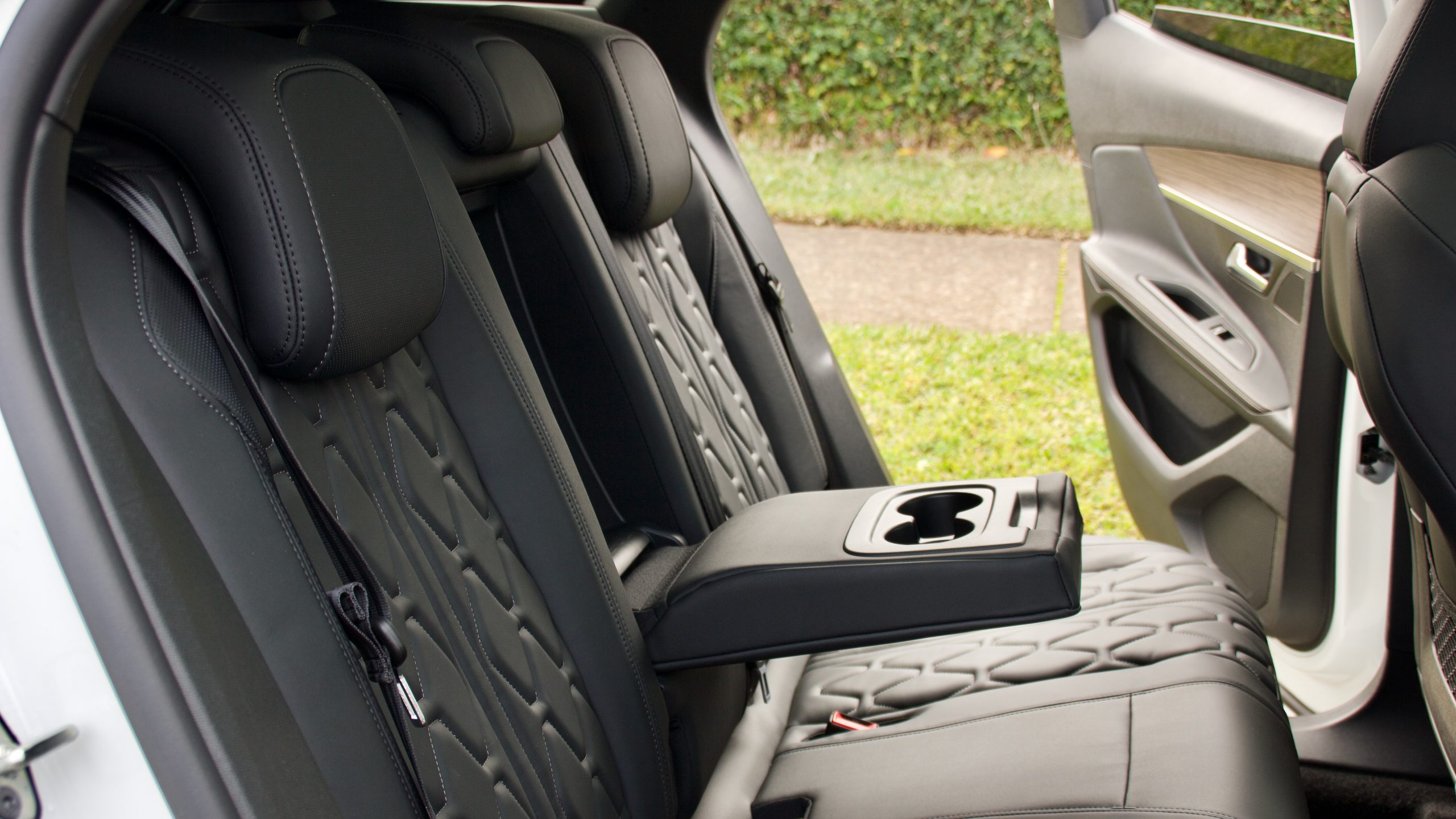
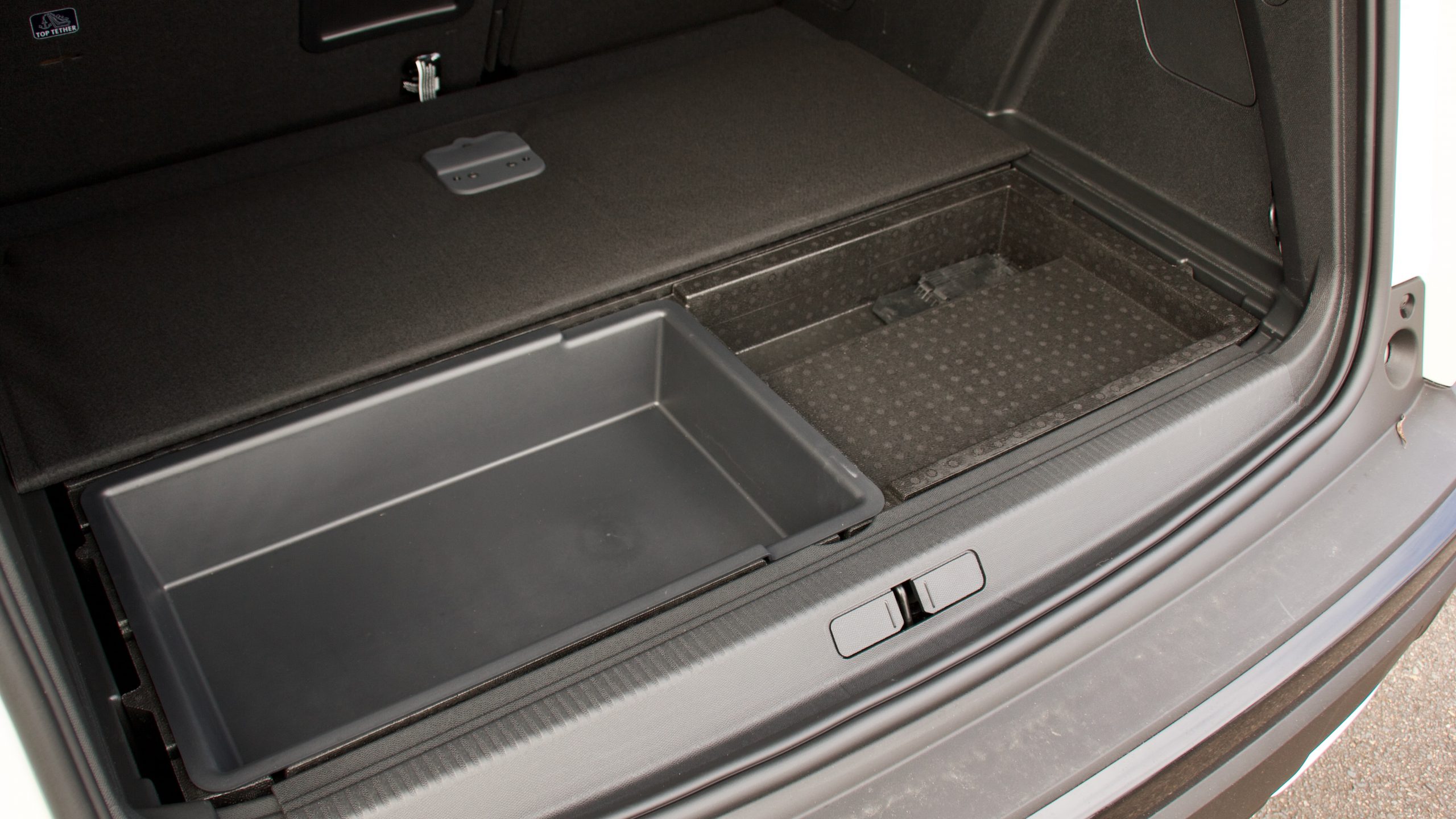
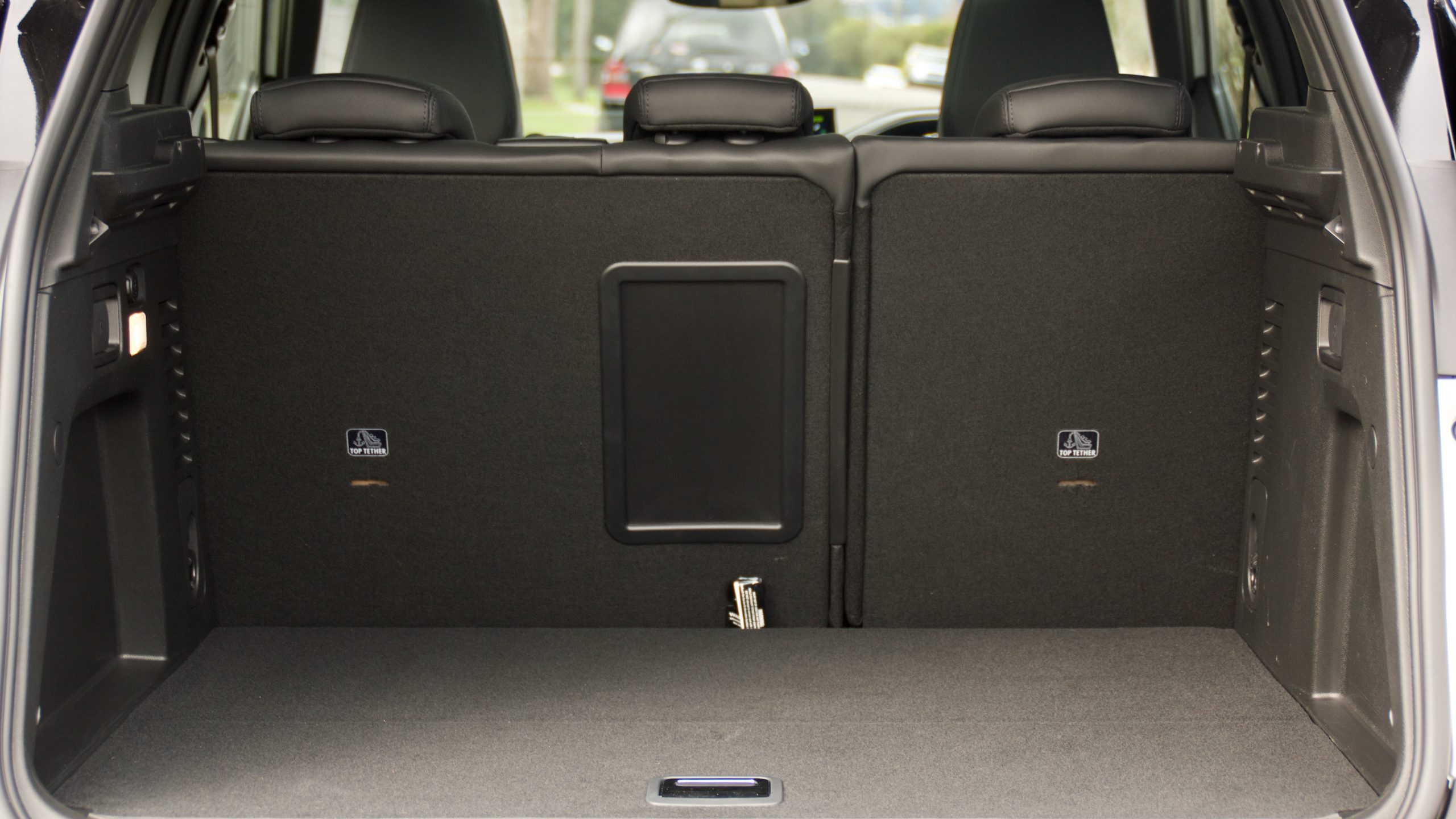
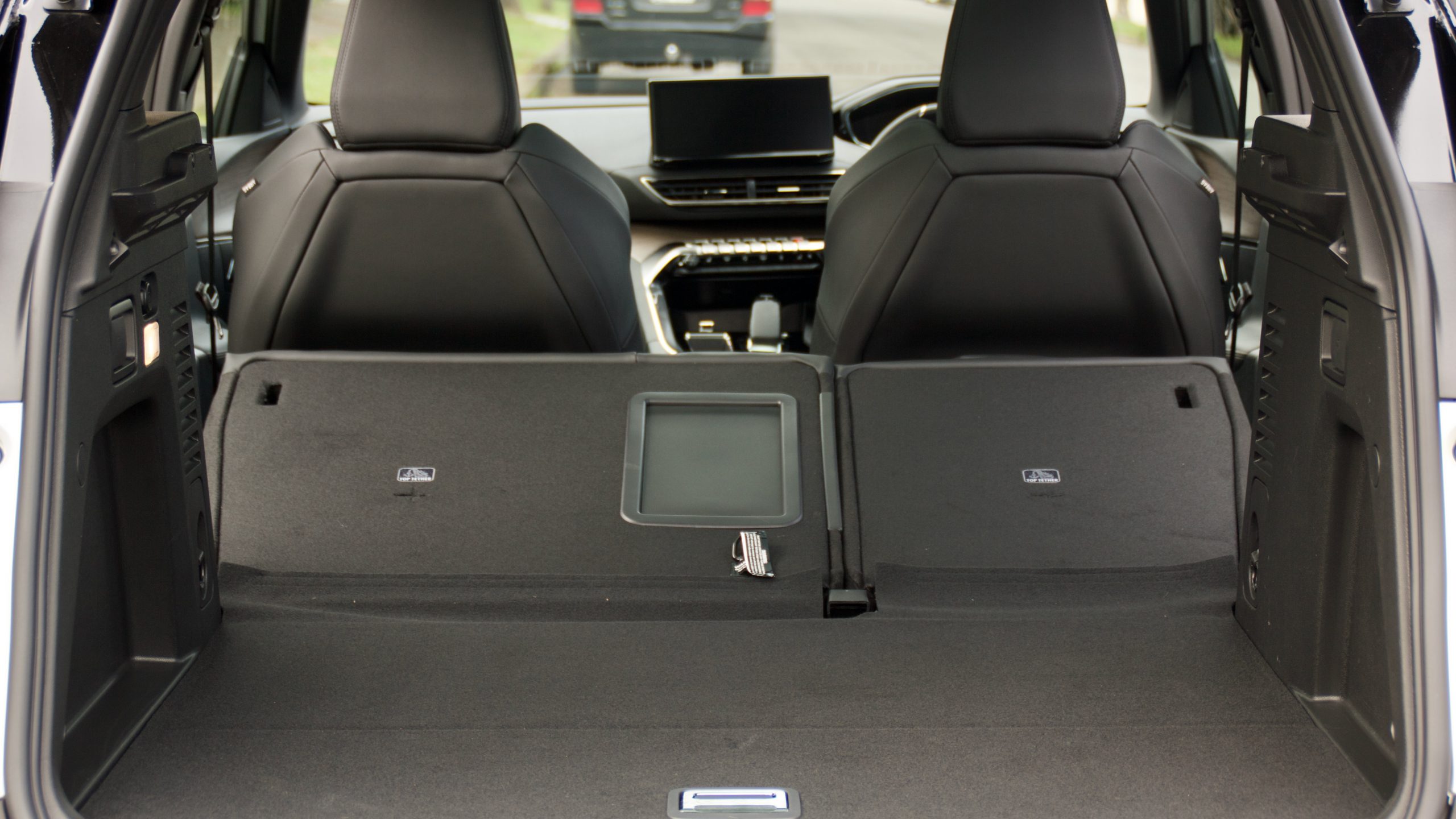
The boot of the 2022 Peugeot 3008 Plug-In Hybrid is large at 529-litres. Folding the rear seats down unlocks 1,520L of space – 170L less than the regular 3008 because the battery lies underneath the rear section of the car. The dual-level boot floor from the regular 3008 is also gone, as is the spare wheel, but there is a bit of storage underneath the boot floor
Service & Warranty: 7/10
As with other Peugeot products, the 2022 Peugeot 3008 Plug-In Hybrid has a five-year/unlimited km warranty with five years of roadside assistance. There’s also an eight-year/160,000km warranty for the battery. The 3008 PHEV has once yearly/20,000km service intervals, which are 5,000km longer than the industry standard. It costs $3,109 over five years/100,000km ($622 per service), which isn’t cheap.
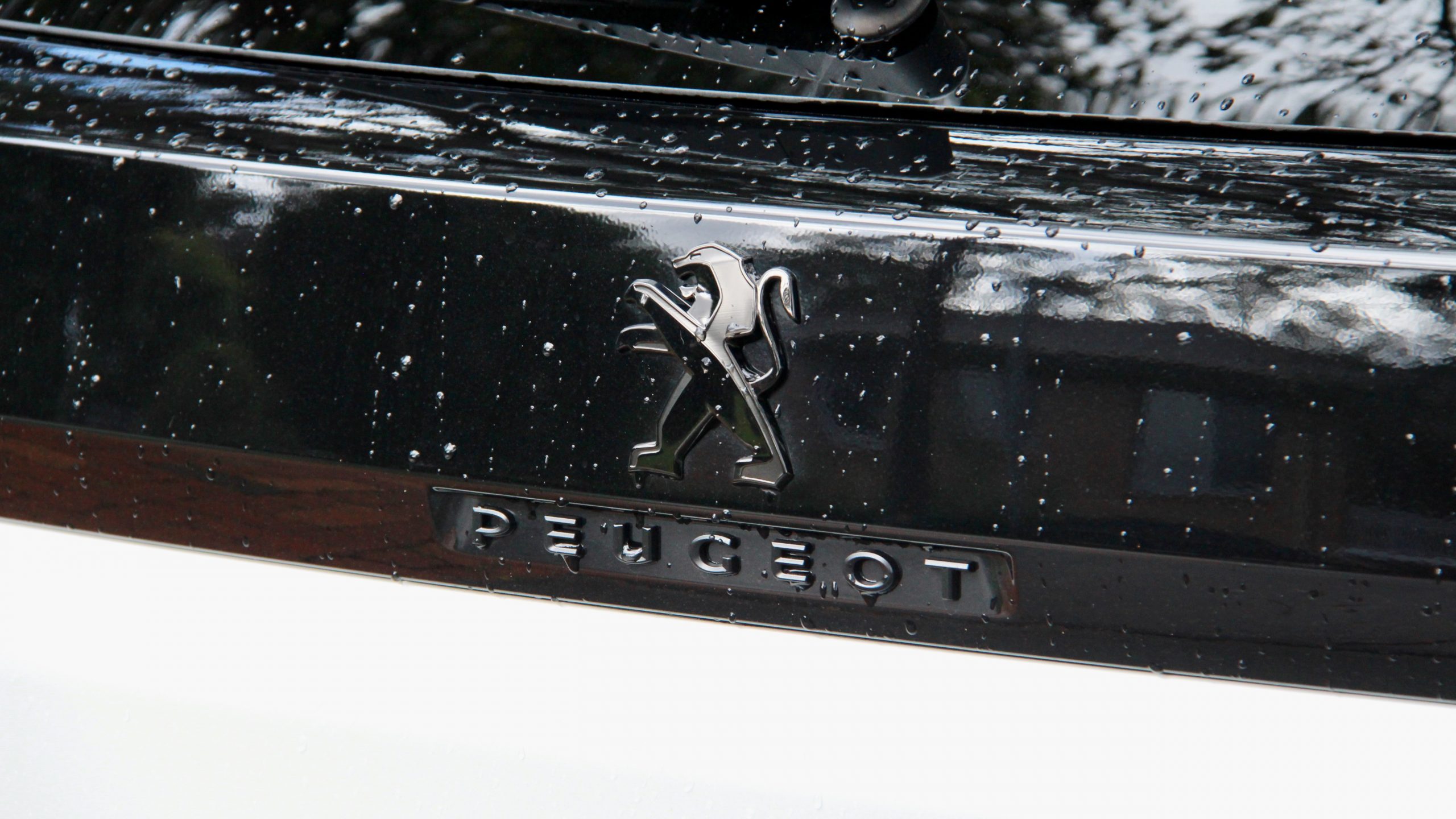
In competitor land, Ford offers an identical five-year/unlimited km warranty with up to seven years of roadside assistance (if serviced at a Ford dealer) for its Escape PHEV, while it costs just $1,511 to service over five years/75,000km. The Mitsubishi Eclipse Cross PHEV costs $1,695 over the same 75,000km as its competitors, while it offers up to 10 years of warranty, though just four years of roadside assistance. As with the Peugeot, both Mitsubishi and Ford offer eight years/160,000km of warranty on the battery.
The 2022 Peugeot 3008 Plug-In Hybrid DiscoverAuto Rating: 7.2/10
Like any car, the 2022 Peugeot 3008 Plug-In Hybrid has its positive and negative points. On the plus side, it’s very well equipped, luxurious, practical, well-sized, well finished, good to drive, offers spritely performance and it looks pretty good as well. It takes the things we love about the regular 3008 and adds in a lot more performance, as well as – finally – independent rear suspension.
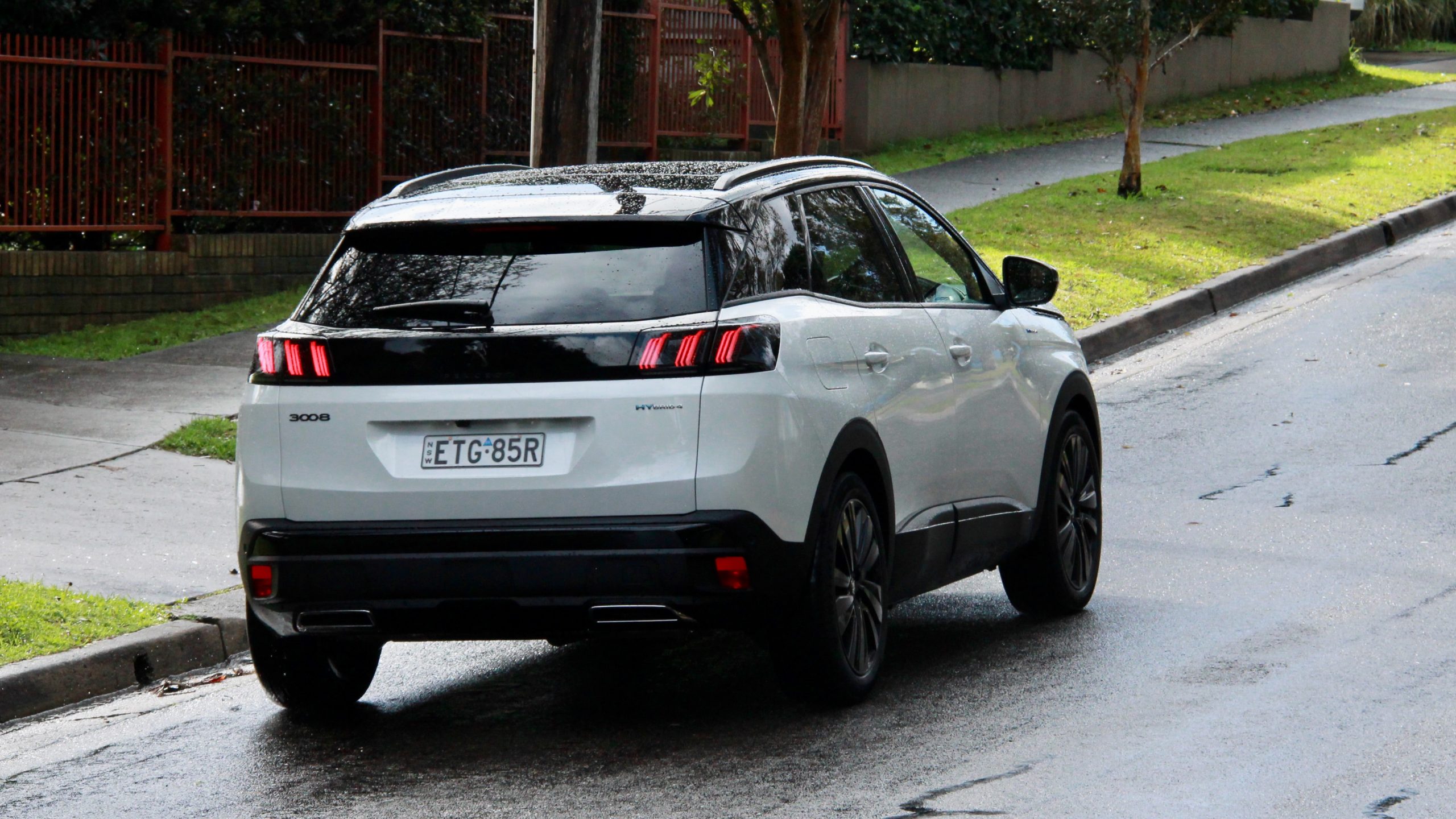
But – and there’s a big but – the price difference between it and the already-expensive regular 3008 is just too much to seriously consider. Yes, the 3008 offers great performance, but its claimed 60km electric driving range doesn’t translate into anything like that in real life, and its 3.4kW maximum charging rate is just too slow to even consider plugging into a public charger. Plus, it’s not like the regular 3008 GT Sport is inefficient either, using a claimed 5.9L/100km of fuel. The 3008 PHEV is a good car, but it’s hampered by slow charging and a lacklustre value equation, so until that’s fixed, the regular 3008 or a better value competitor is a superior option.
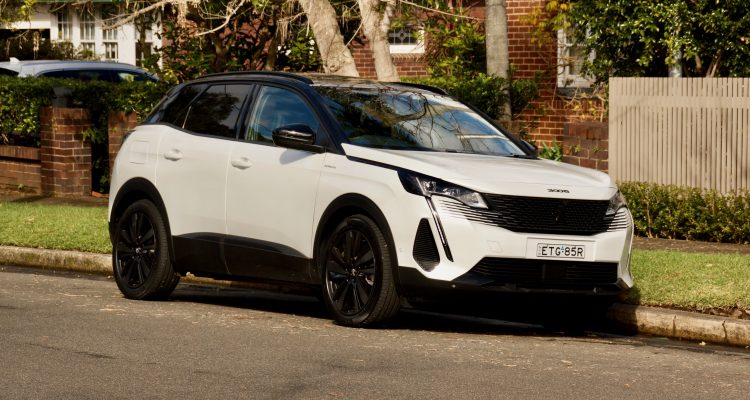
Leave a Reply